15 minutes of fame
15 Minutes of Fame is an interactive sculpture installation featuring a prison bed (reclaimed from the former Kingston Penitentiary for Women); an orange, standard-issue get-out-of-jail prison suitcase filled with a variety of objects; and an individual — with Artist-facilitated Question & Answer sessions.
Immensely popular with people of all ages, cultures and socio-economic backgrounds, this work has shown in art galleries, museums, festivals, street fairs and public events since 2005.
the choice is yours
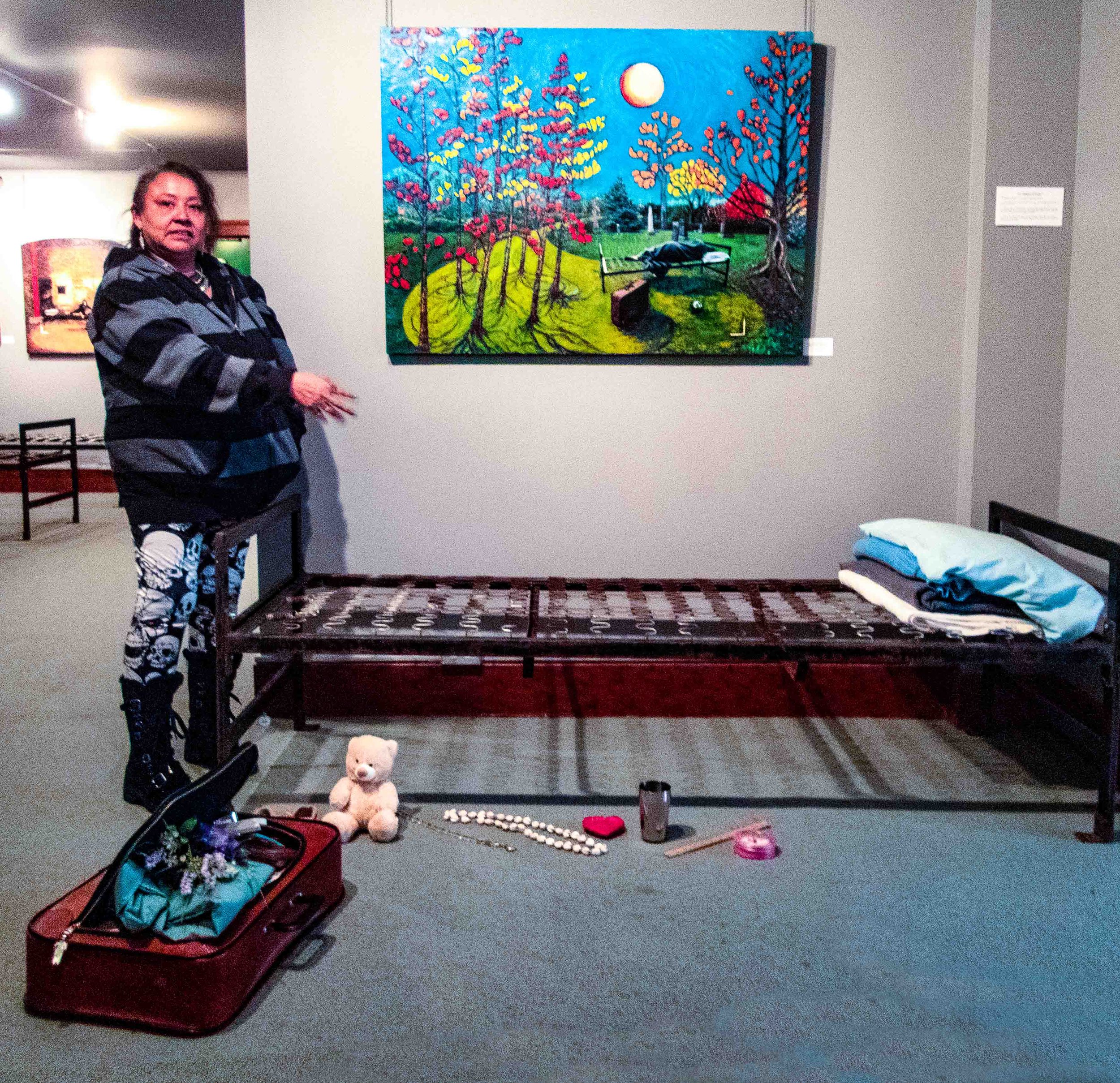
“In the suitcase thingy I found my past, present and possibilities of future things.”
Amy — participant in 15 Minutes of Fame installation and workshop with Parallel Lines exhibition - Museum of Northern History
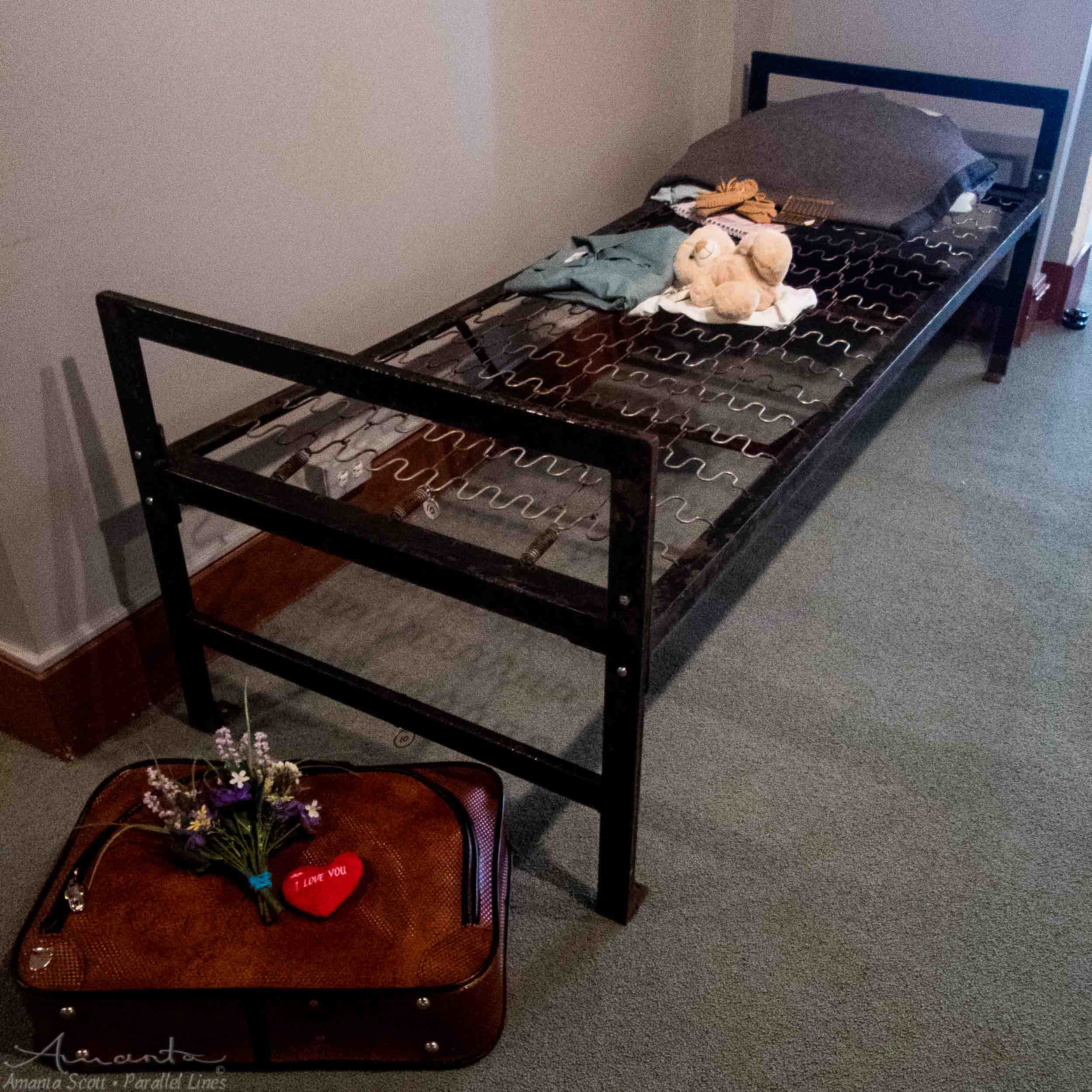
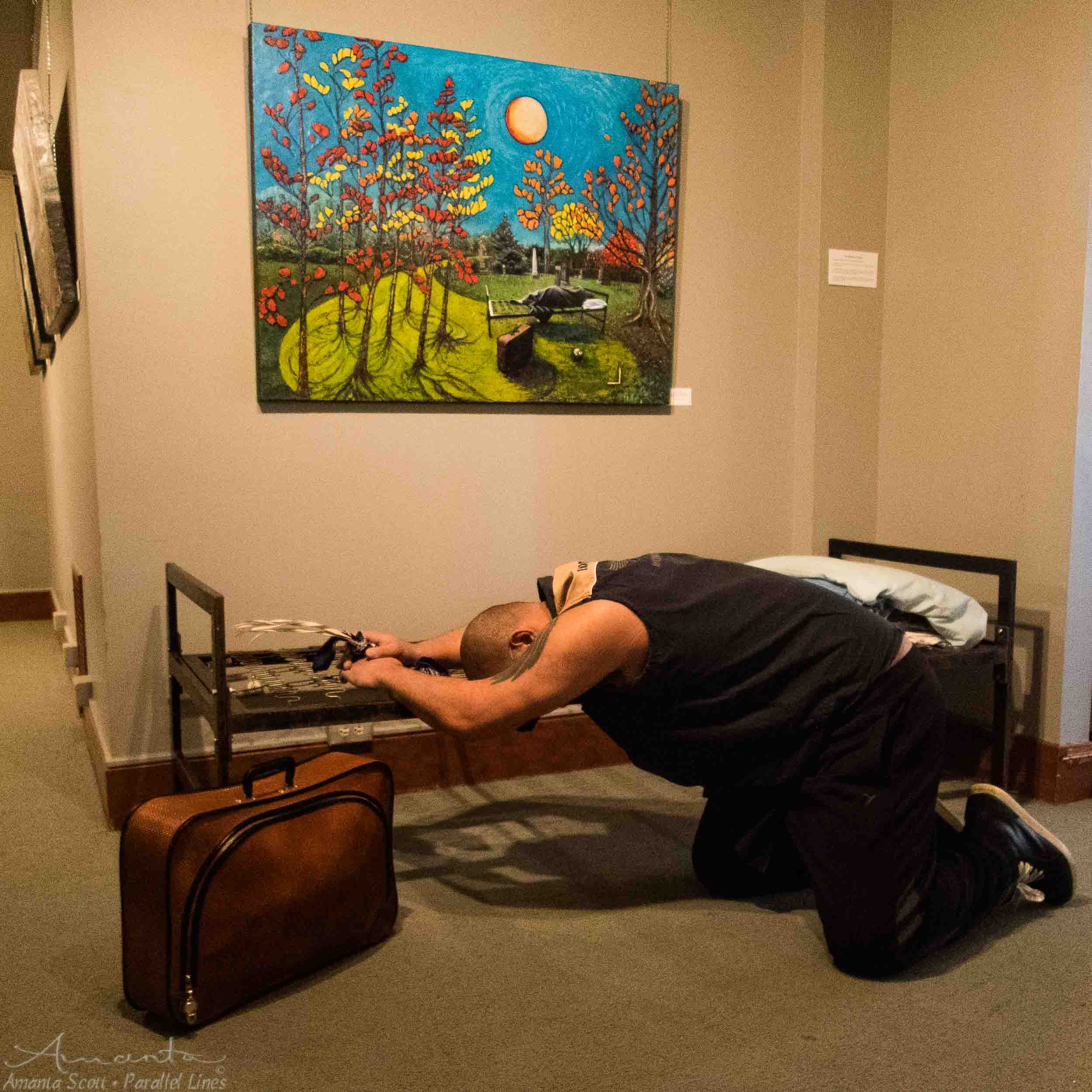
“I’ve never seen my biological father.
I’ve never seen God either, but I believe they both exist.”
Ted — participant in 15 Minutes of Fame installation with Parallel Lines exhibition - Museum of Northern History
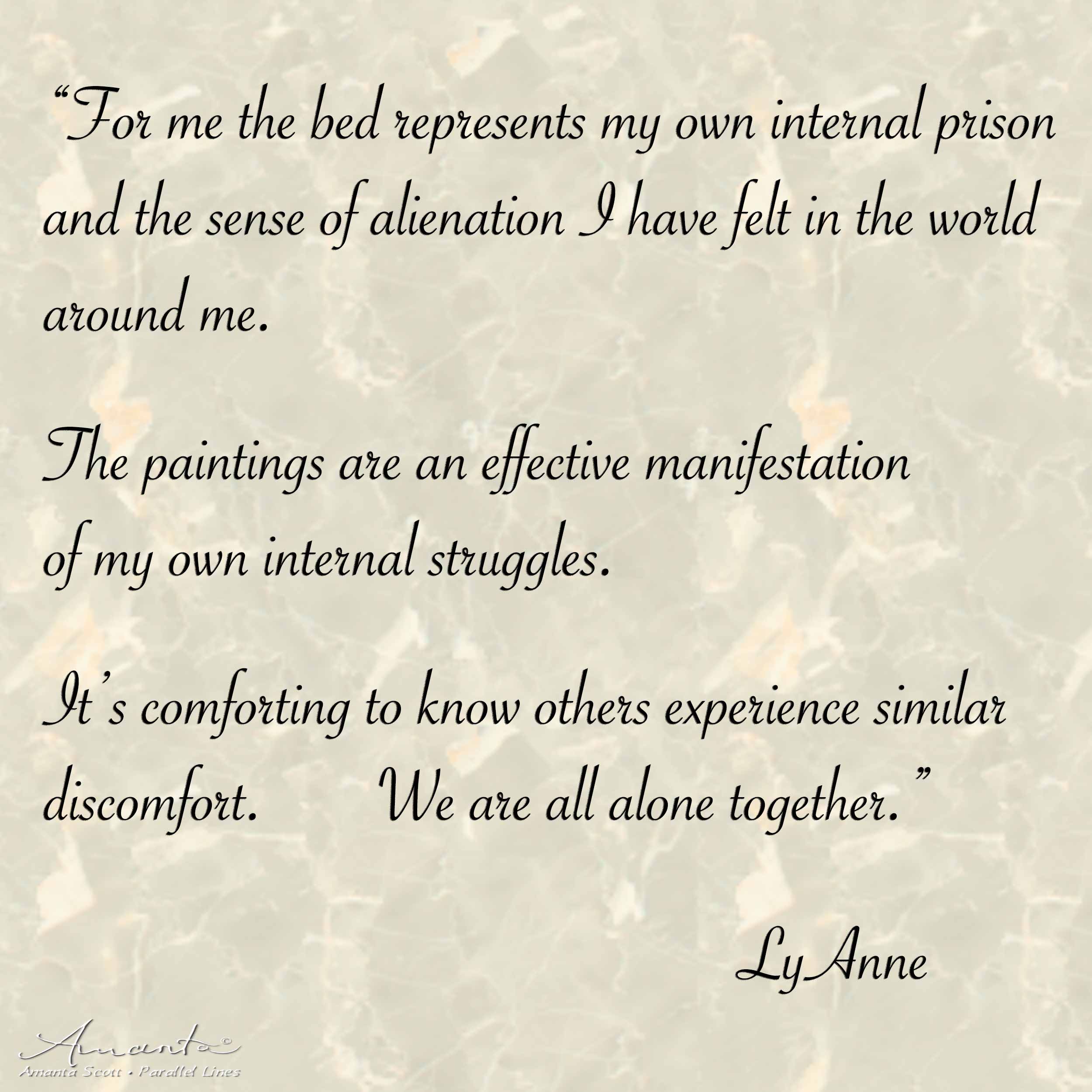
“For me, the bed represents my own internal prison and the sense of alienation I have felt in the world around me.
The paintings are an effective manifestation of my own internal struggles.
It’s comforting to know others experience similar discomfort.
We are all alone together.”
LyAnne - visitor/participant in 15 Minutes of Fame installation with Parallel Lines exhibition - Museum of Northern History; Counsellor with Canadian Mental Health Association
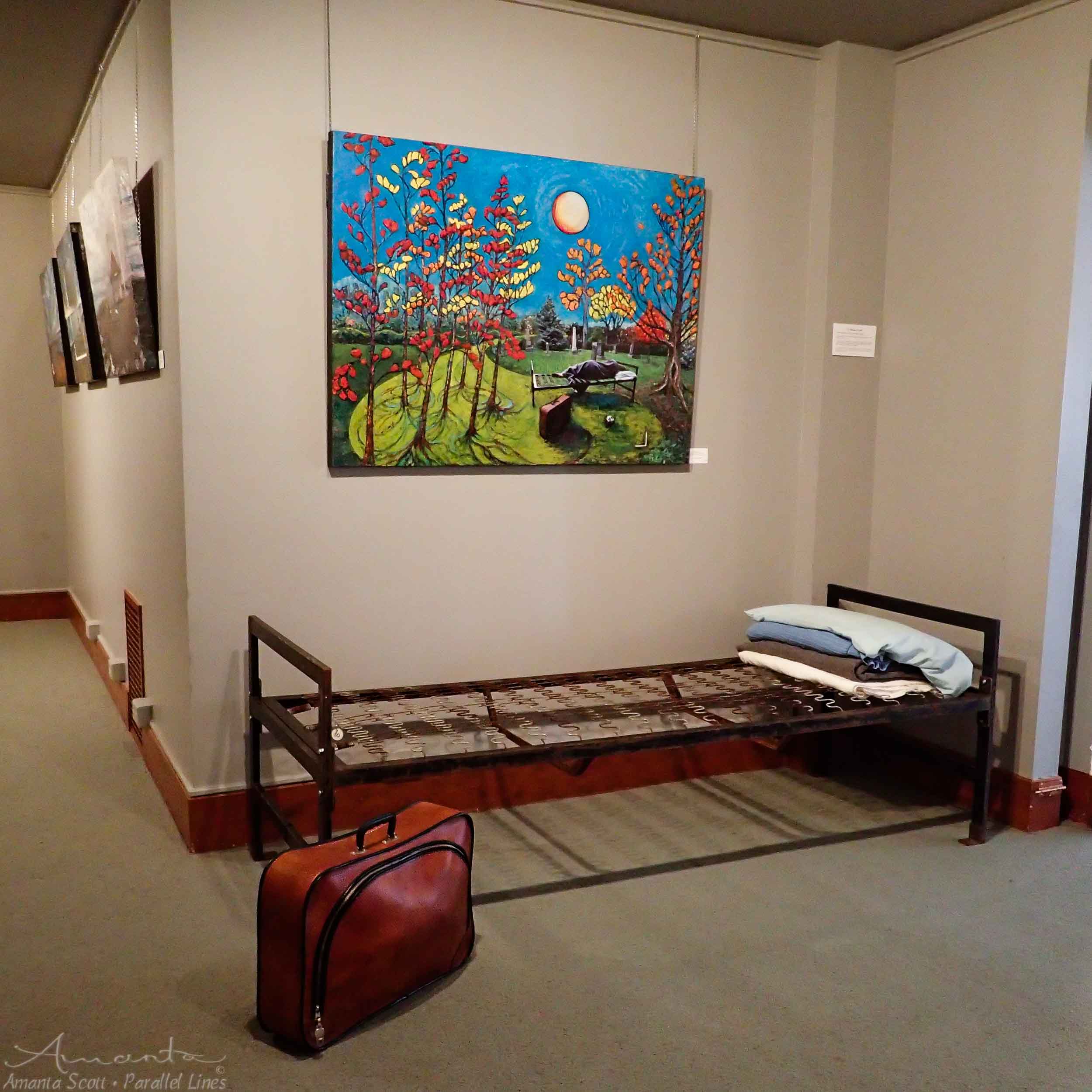
15 Minutes of Fame interactive sculpture installation in Parallel Lines exhibition at Museum of Northern History.
Visitors are invited to open the suitcase, consider and arrange the contents around and upon the bed to create an artistic statement or convey a story.
Visitors are then invited to discuss their work with onlookers and/or write about it in the Book of Fame.
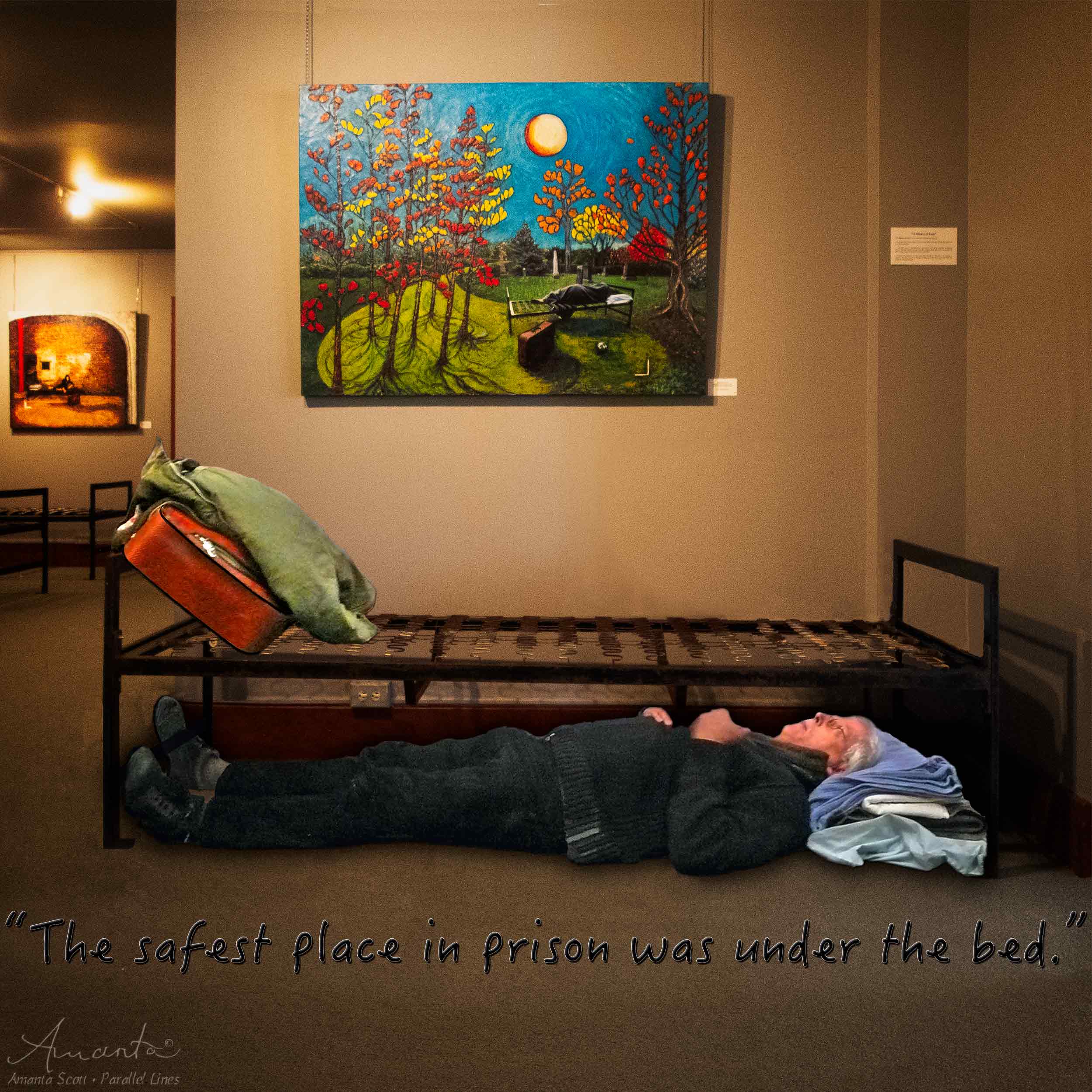
This man put himself under the bed, saying “this was the safest place in prison.”
Another man exclaimed: “you’d never catch me under any bed. I spent half my life in prison, I ruled the place!”
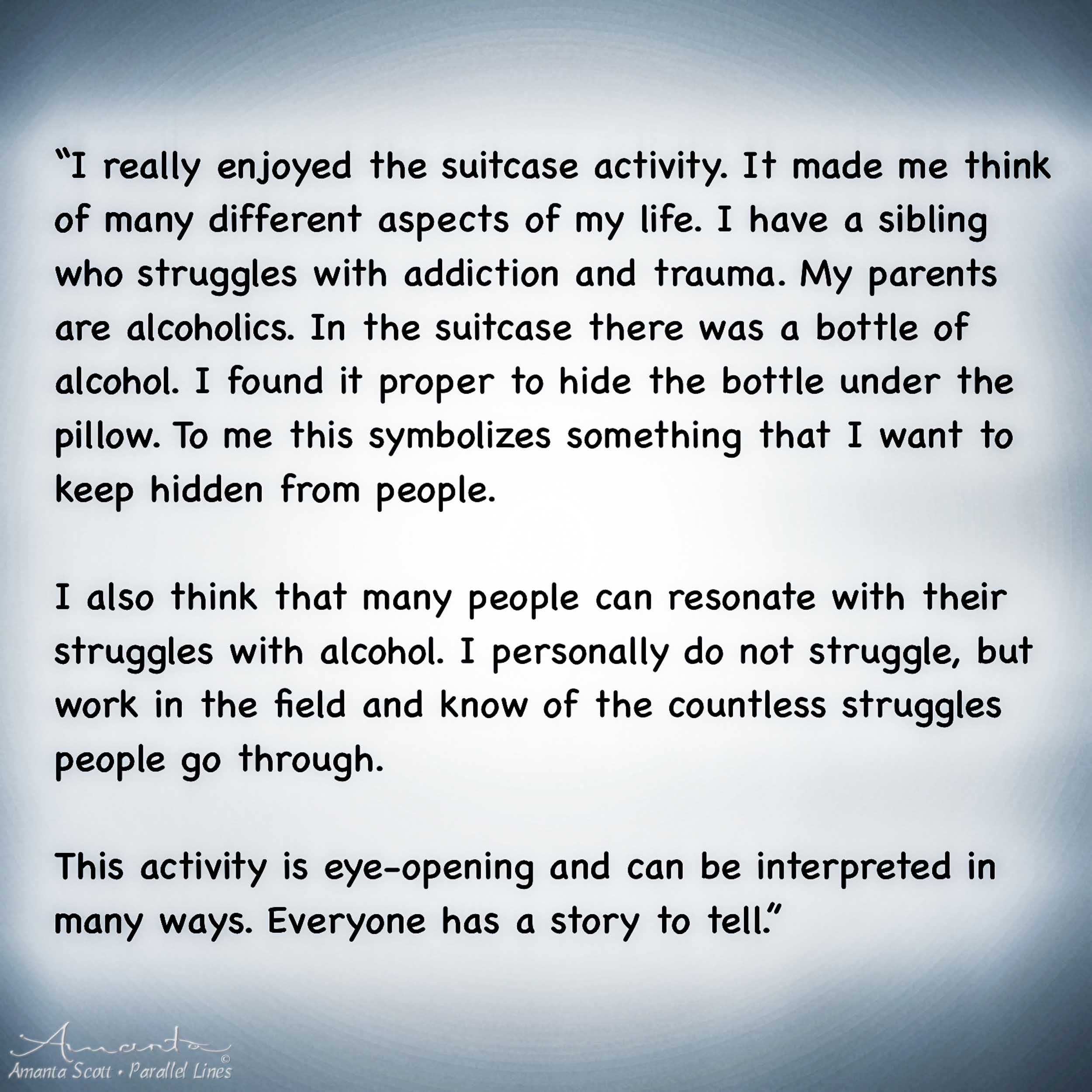
Matthew - participant in 15 Minutes of Fame installation with Parallel Lines exhibition - Museum of Northern History
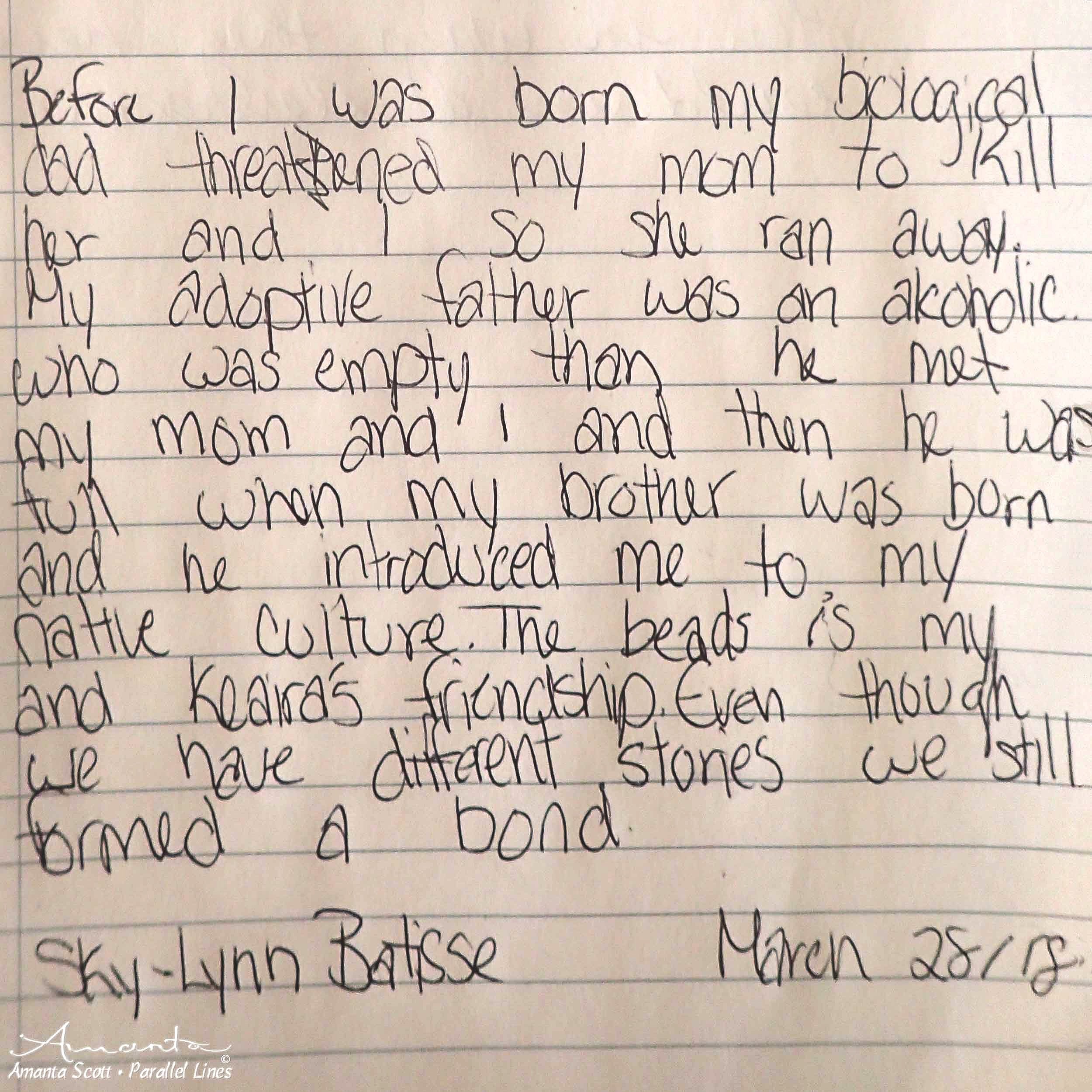
“Before I was born my biological dad threatened my mom to kill her and I. So she ran away. My adoptive father was an alcoholic who was empty. Then he met my mom and I and then he was fun. When my brother was born her introduced me to my native cultures. The beads is my and Keara’s friendship. Even though we have different stories we still formed a bond.”
Sky-Lynn — visitor/participant in 15 Minutes of Fame installation with Parallel Lines exhibition - Museum of Northern History
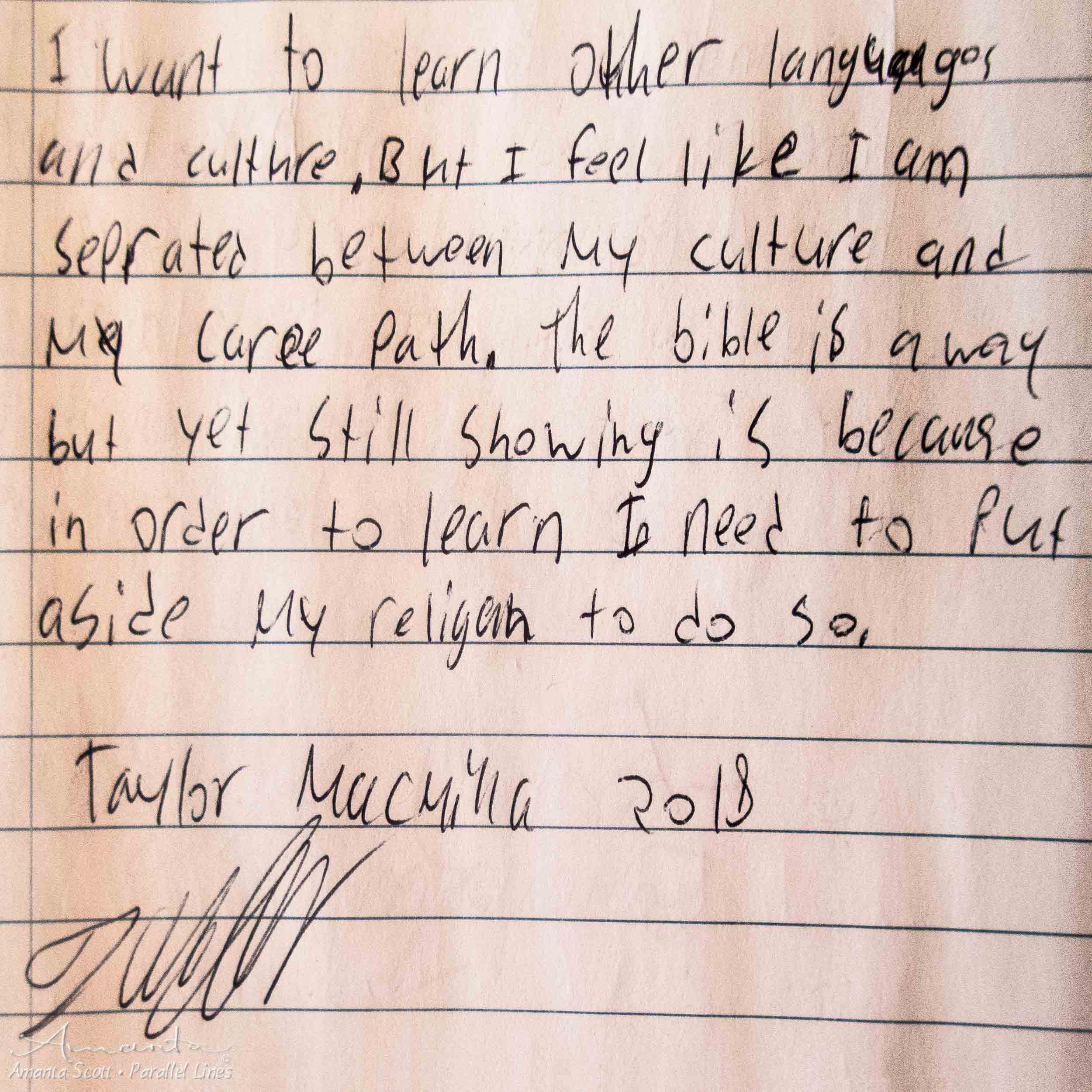
“I want to learn other languages and cultures. But I feel like I am separated between my culture and my career path. The bible is away but yet still showing is because in order to learn I need to put aside my religion to do so.”
Taylor - participant in 15 Minutes of Fame installation with Parallel Lines exhibition - Museum of Northern History
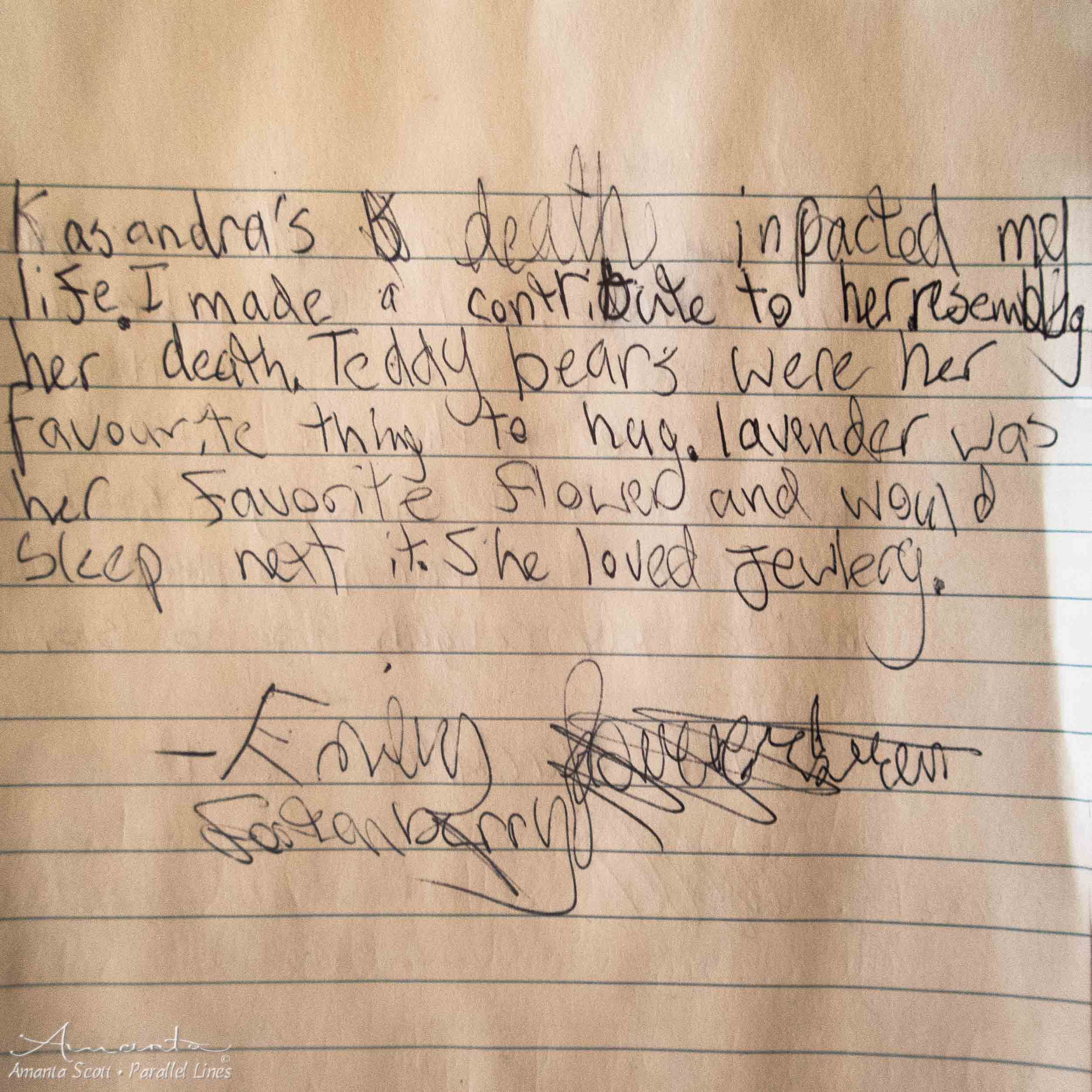
“Kasandra’s death impacted my life. I made a contribute to her resembling her death. Teddy bears were her favourite thing to hug. Lavender was her favourite flower and would sleep next to it. She loved jewelry.
Emily — visitor/participant in 15 Minutes of Fame installation with Parallel Lines exhibition - Museum of Northern History
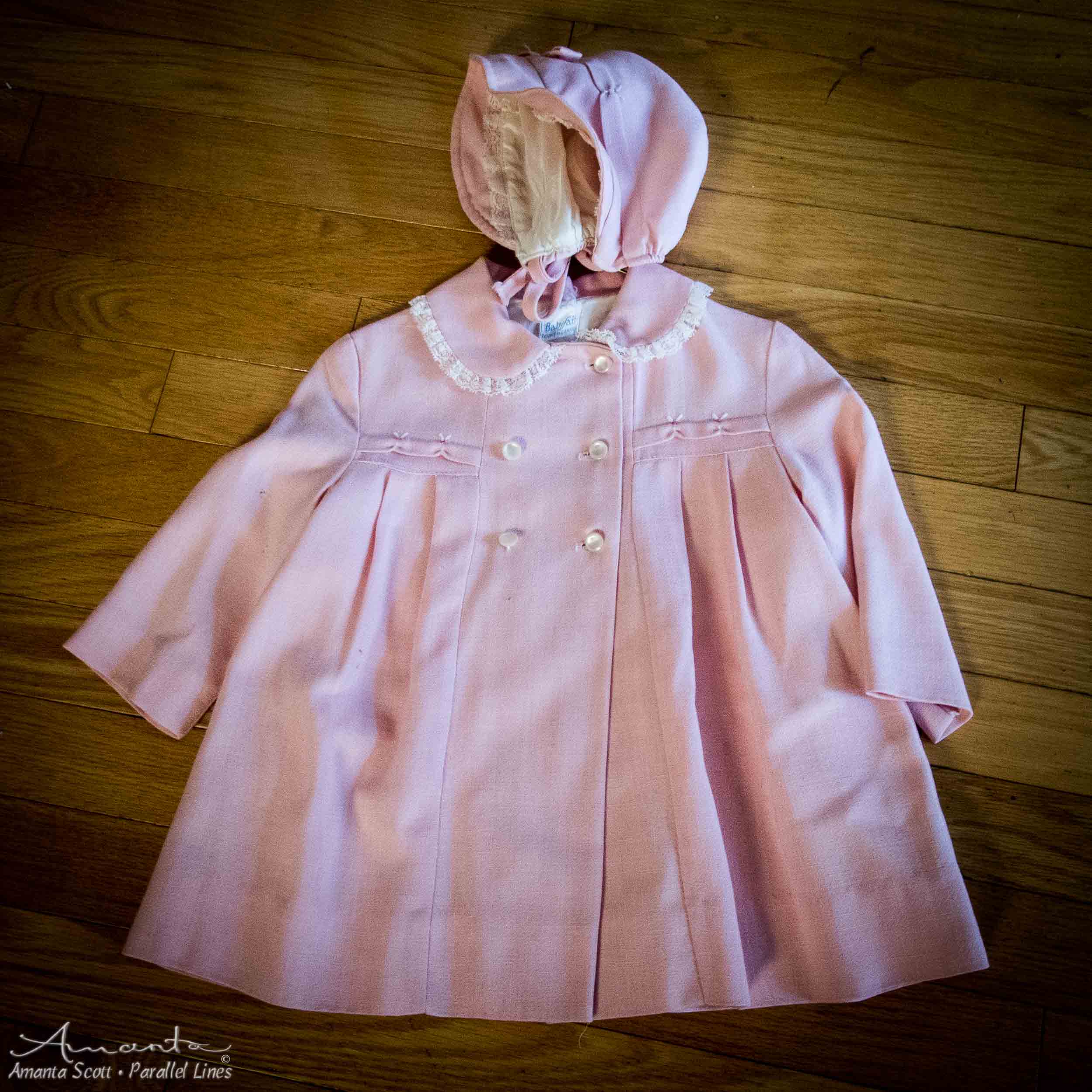
A week or so after participating in 15 Minutes of Fame at Museum of Northern History, Kirkland Lake, a woman donated this baby’s outfit for inclusion in the suitcase.
She explained that her mother had given her this outfit and that she’d had it in her possession for fifty years. She has disliked pink and disliked dresses all her life.
“My mother was always forcing me into frilly pink outfits. I wanted to be a welder working on cars.”
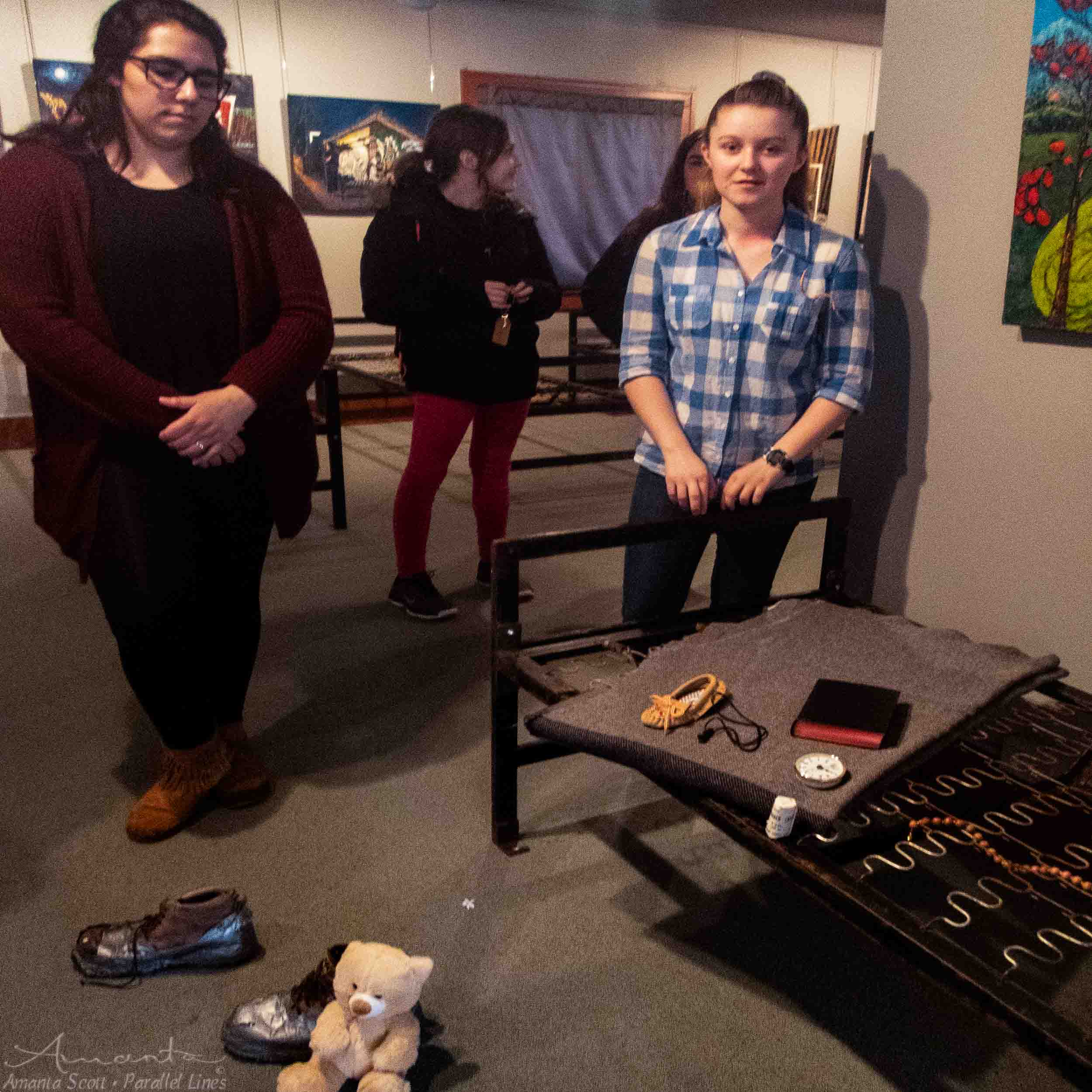
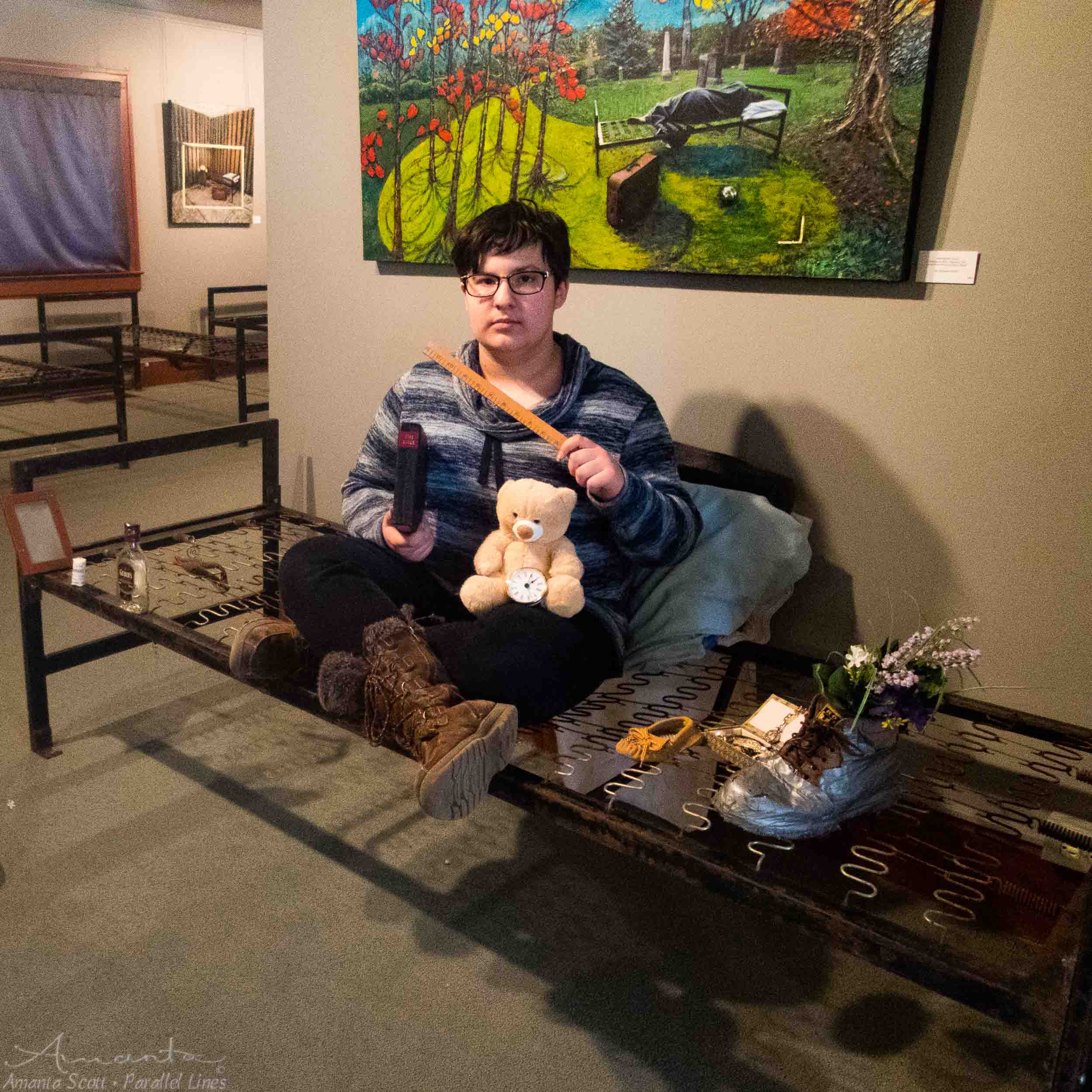
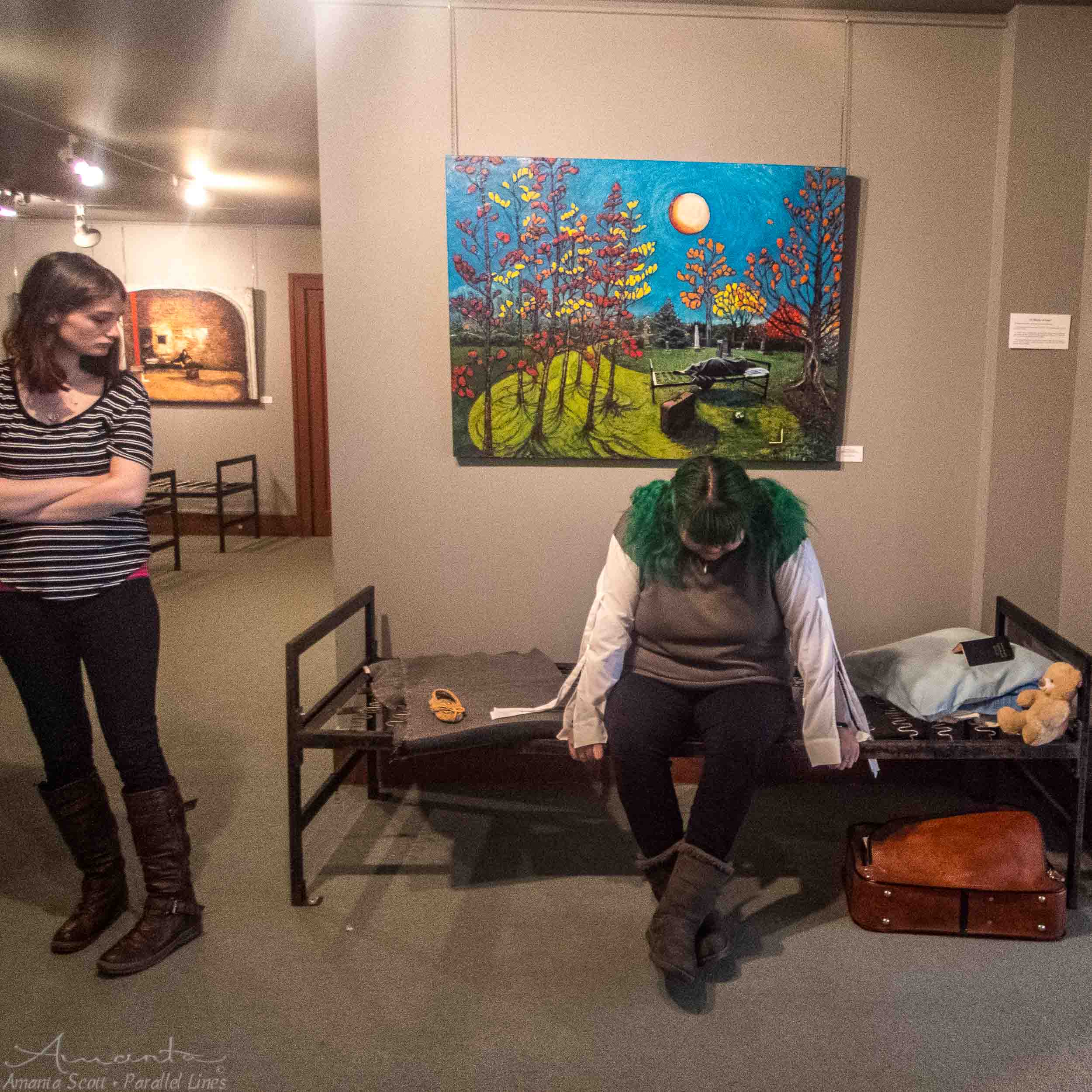
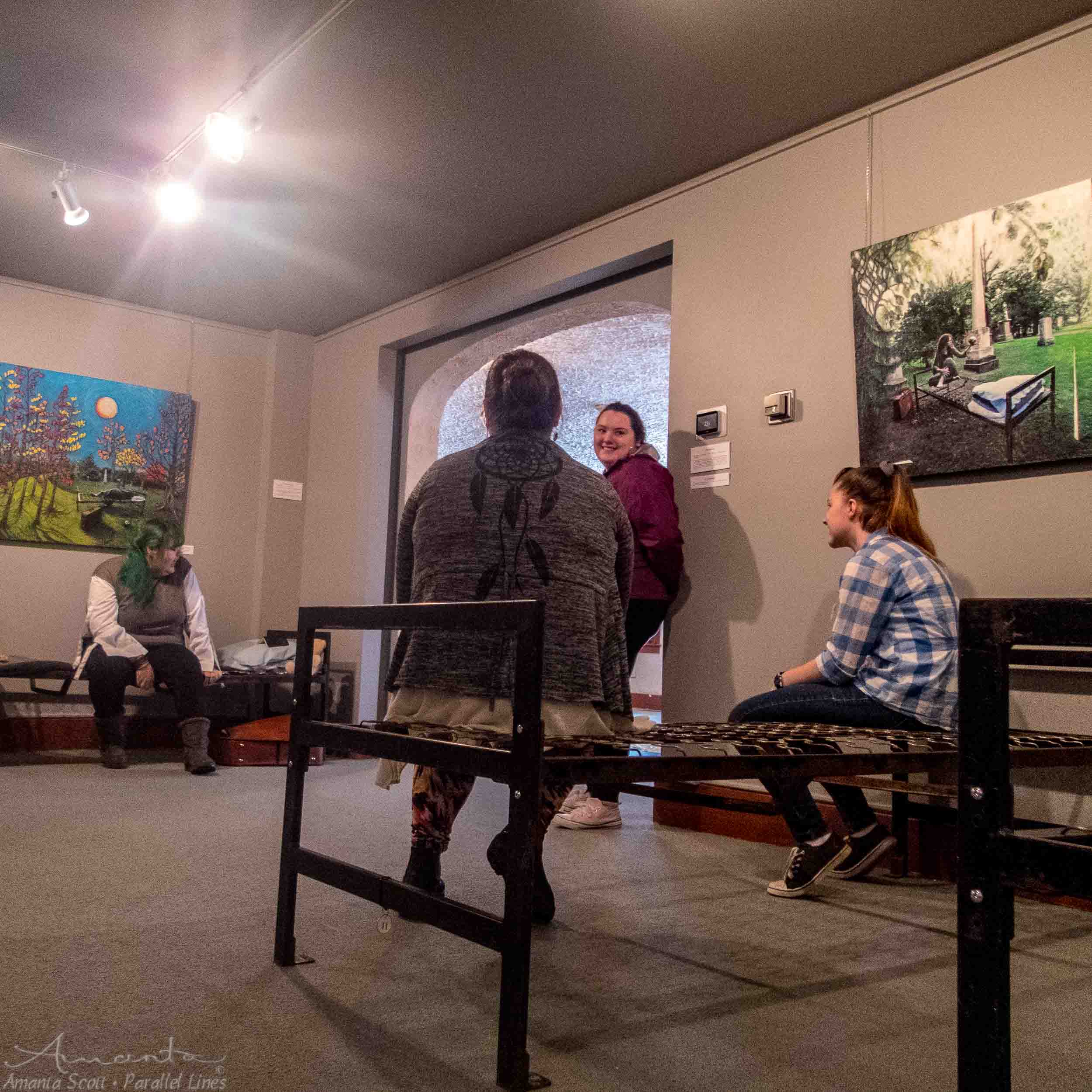
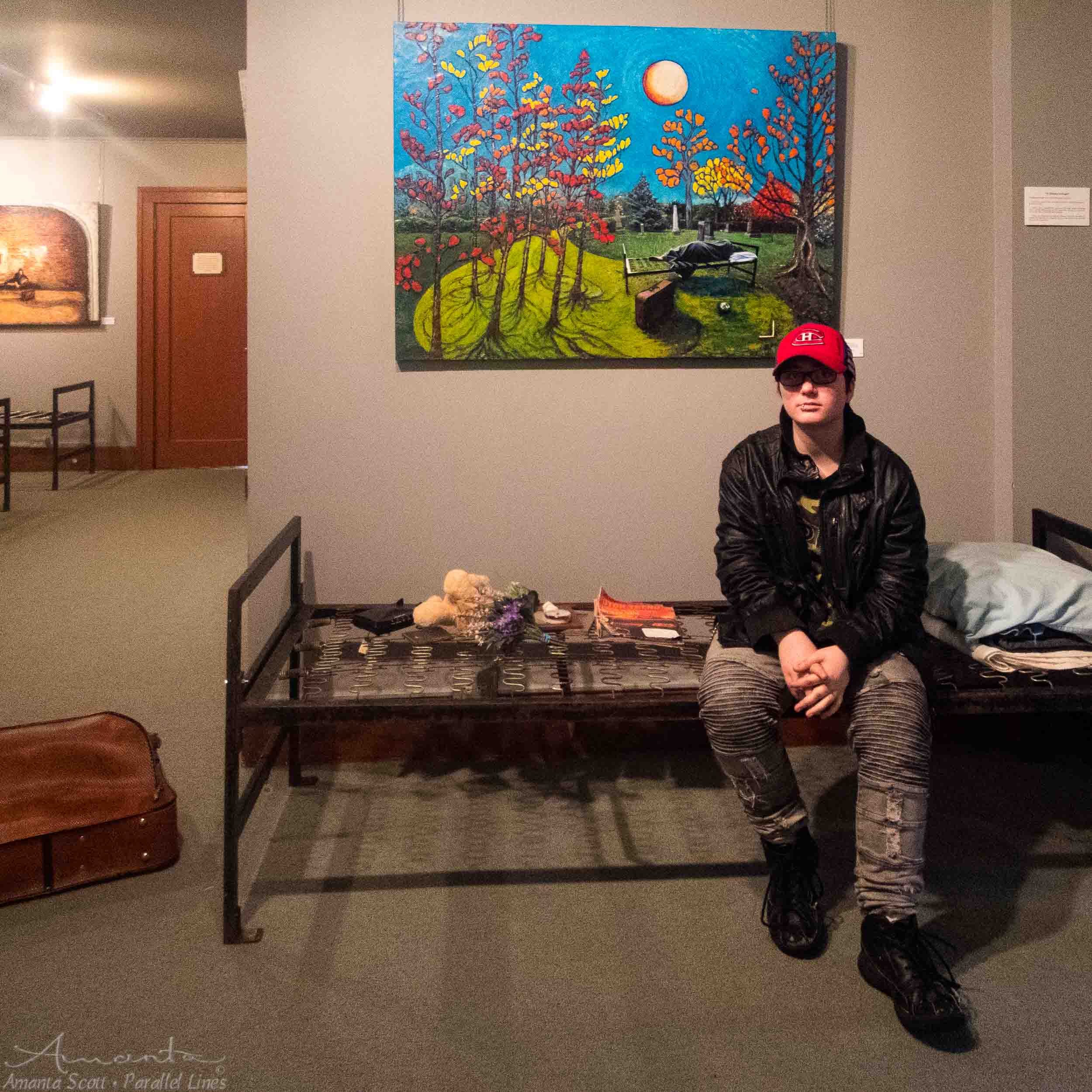
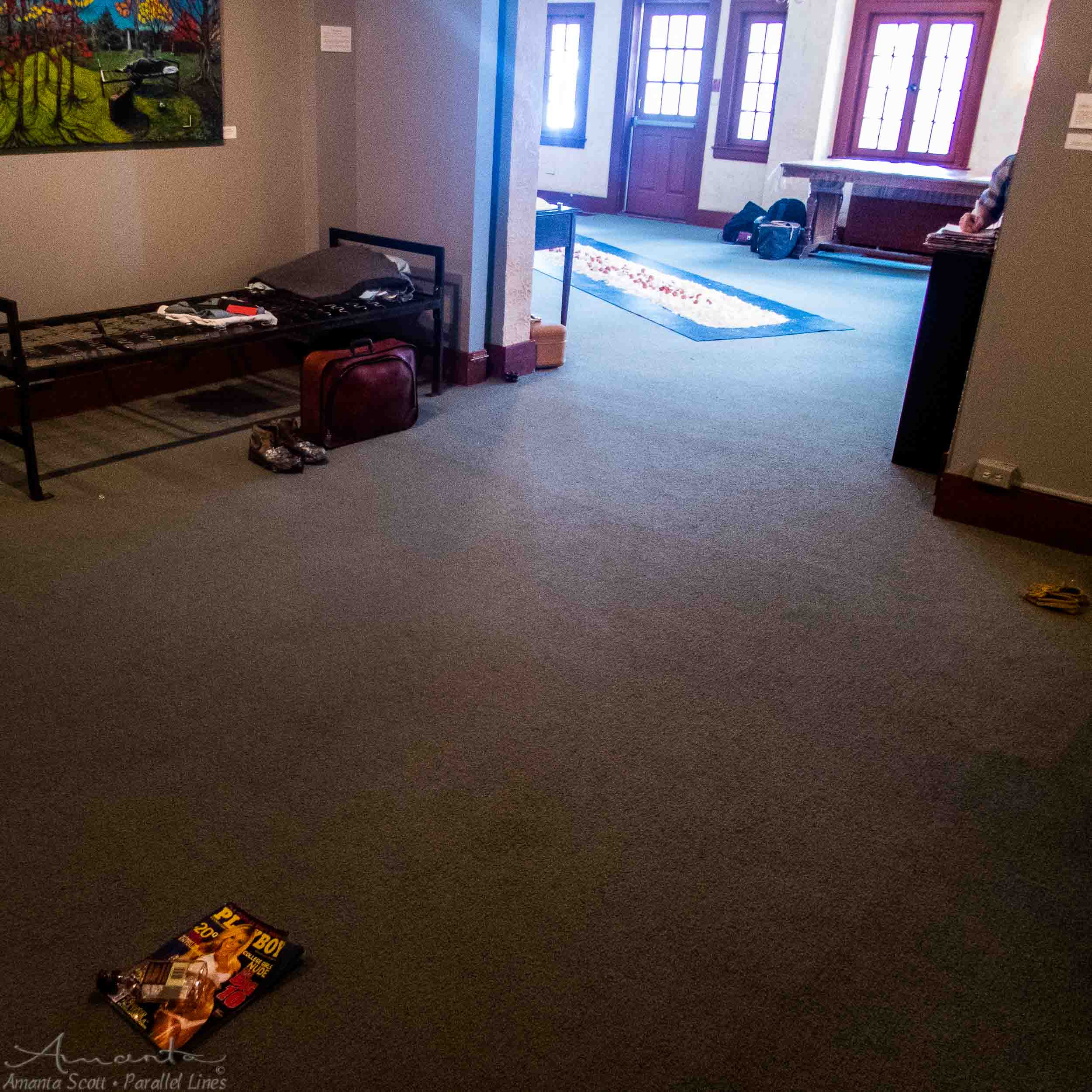
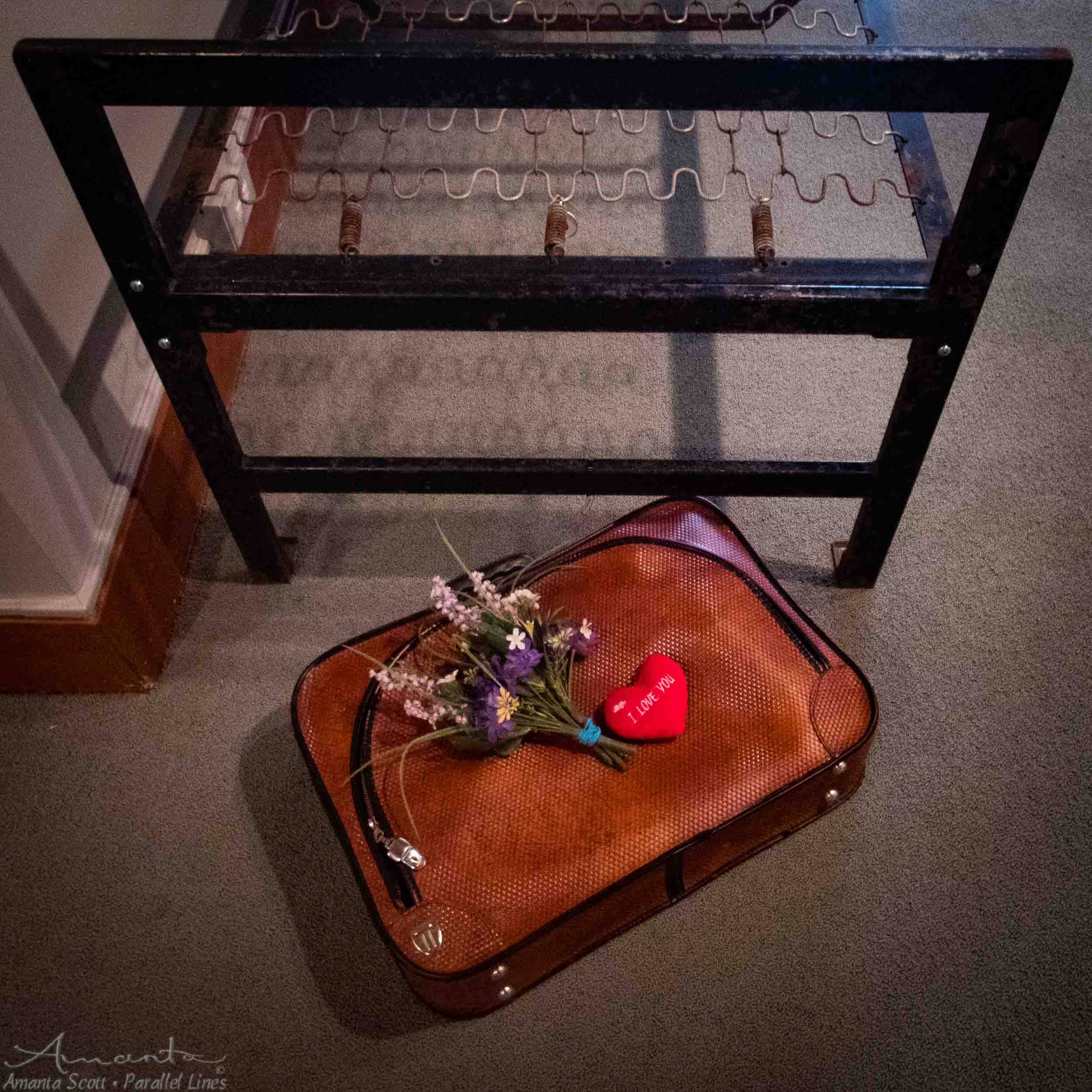
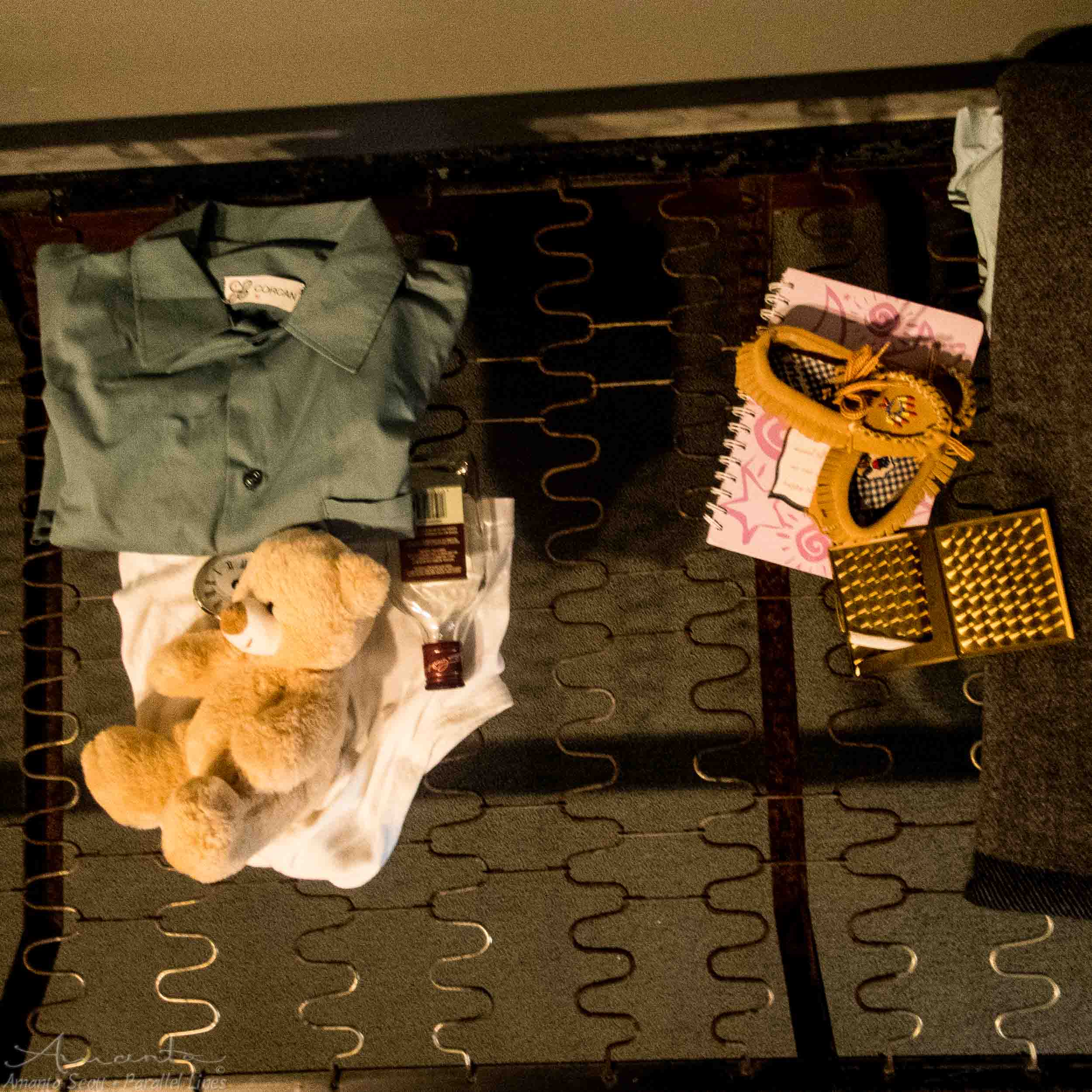
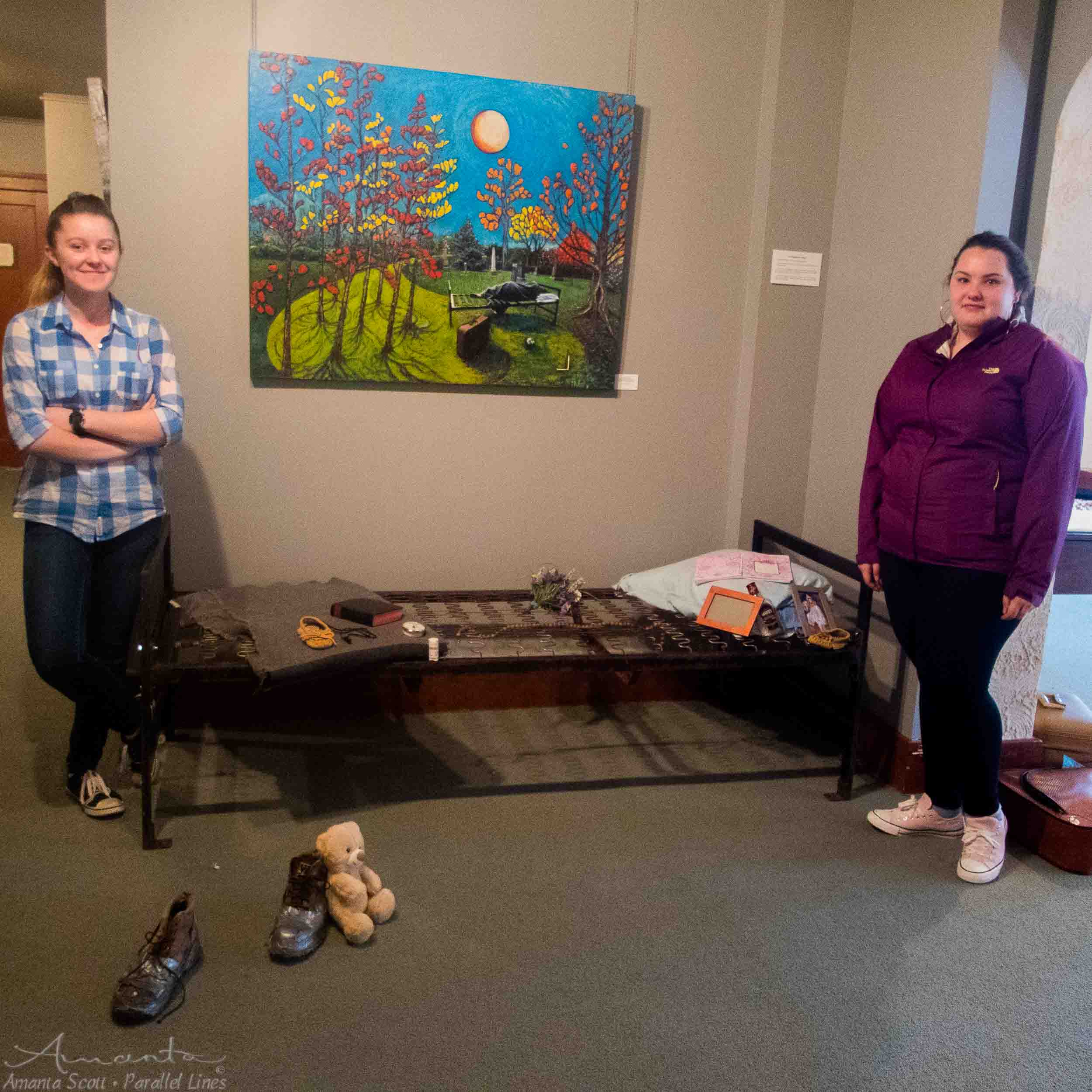
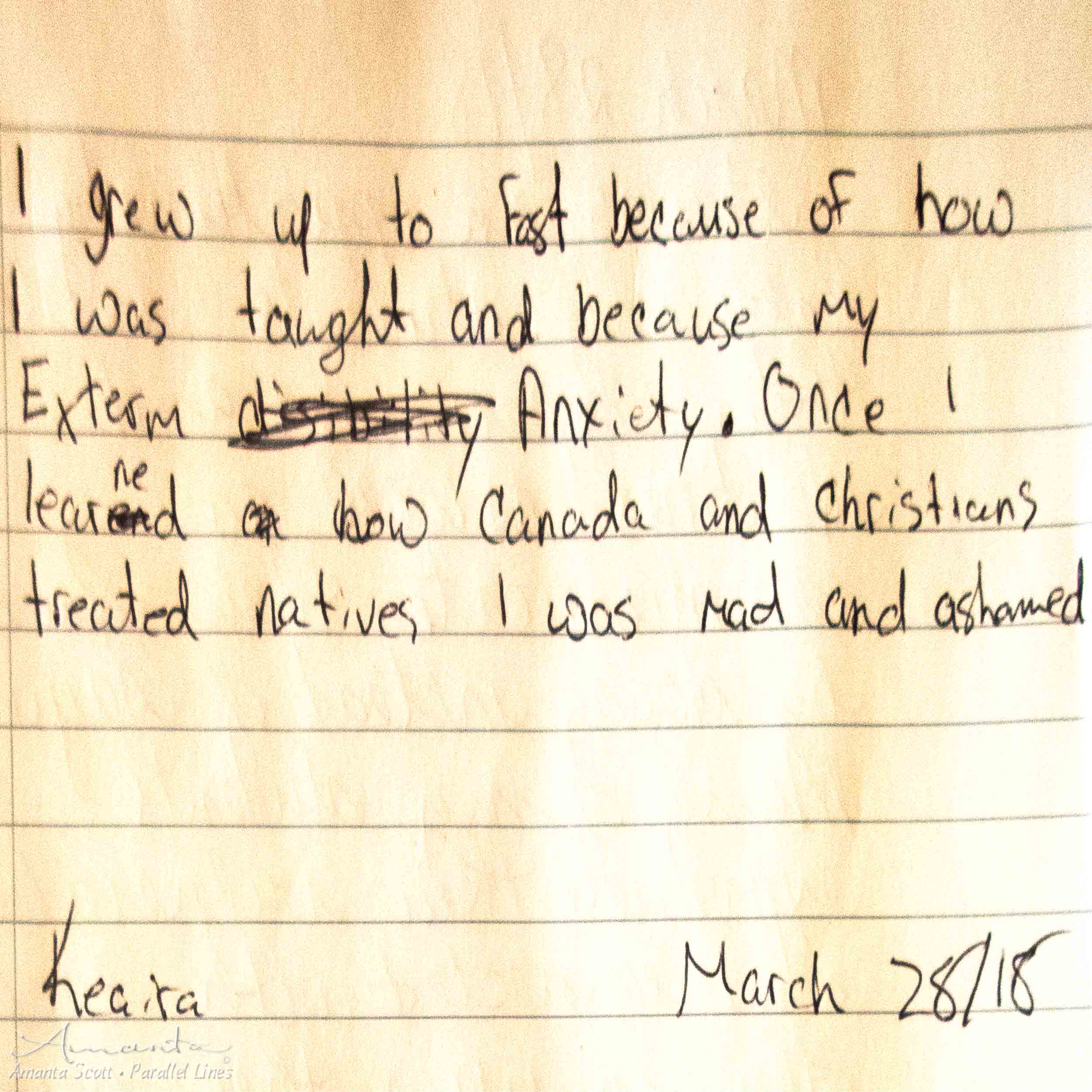
“I grew up too fast because of how I was taught and because of my extreme anxiety. Once I learned how Canada and Christians treated natives I was mad and ashamed.”
Keaira - visitor/participant in 15 Minutes of Fame installation with Parallel Lines exhibition - Museum of Northern History
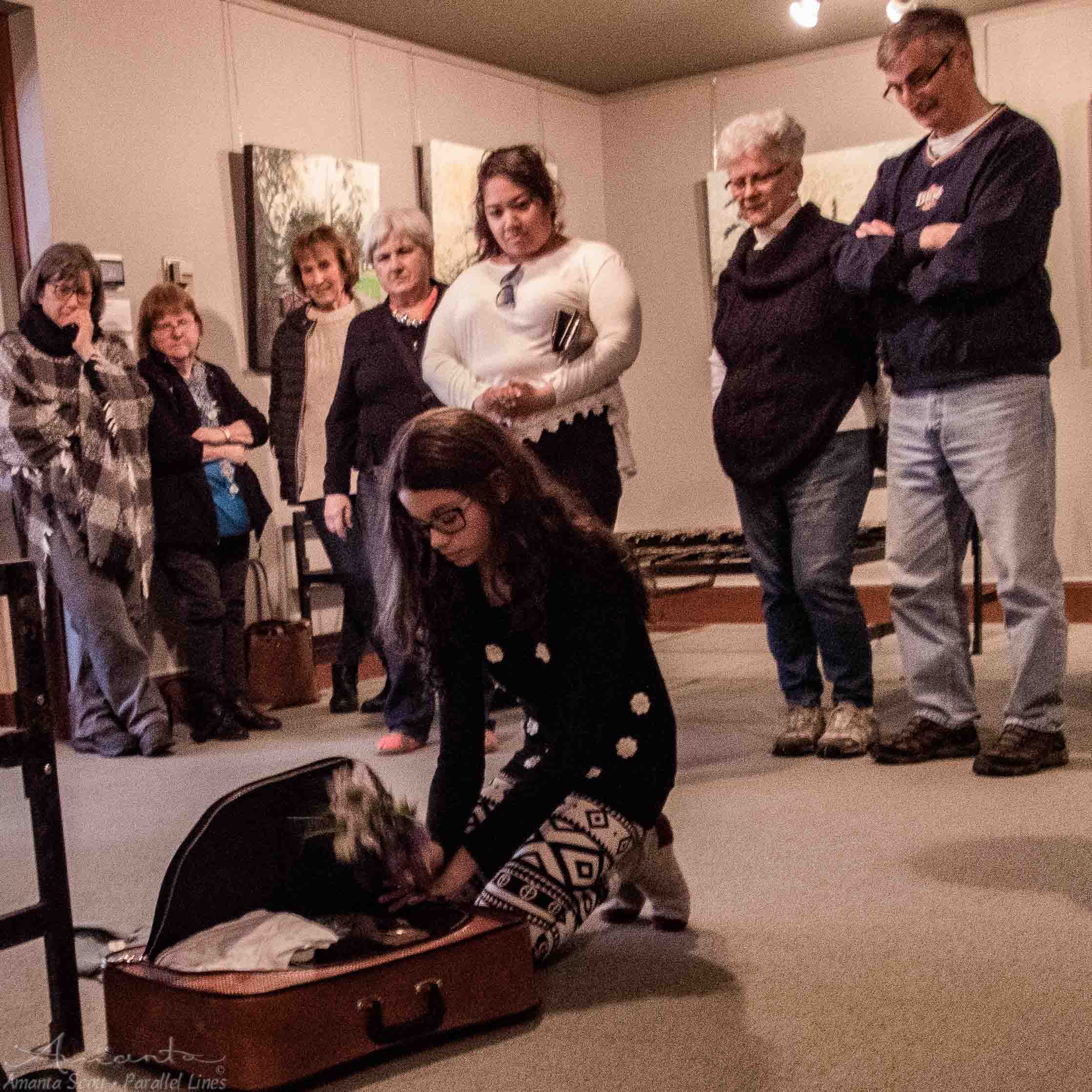
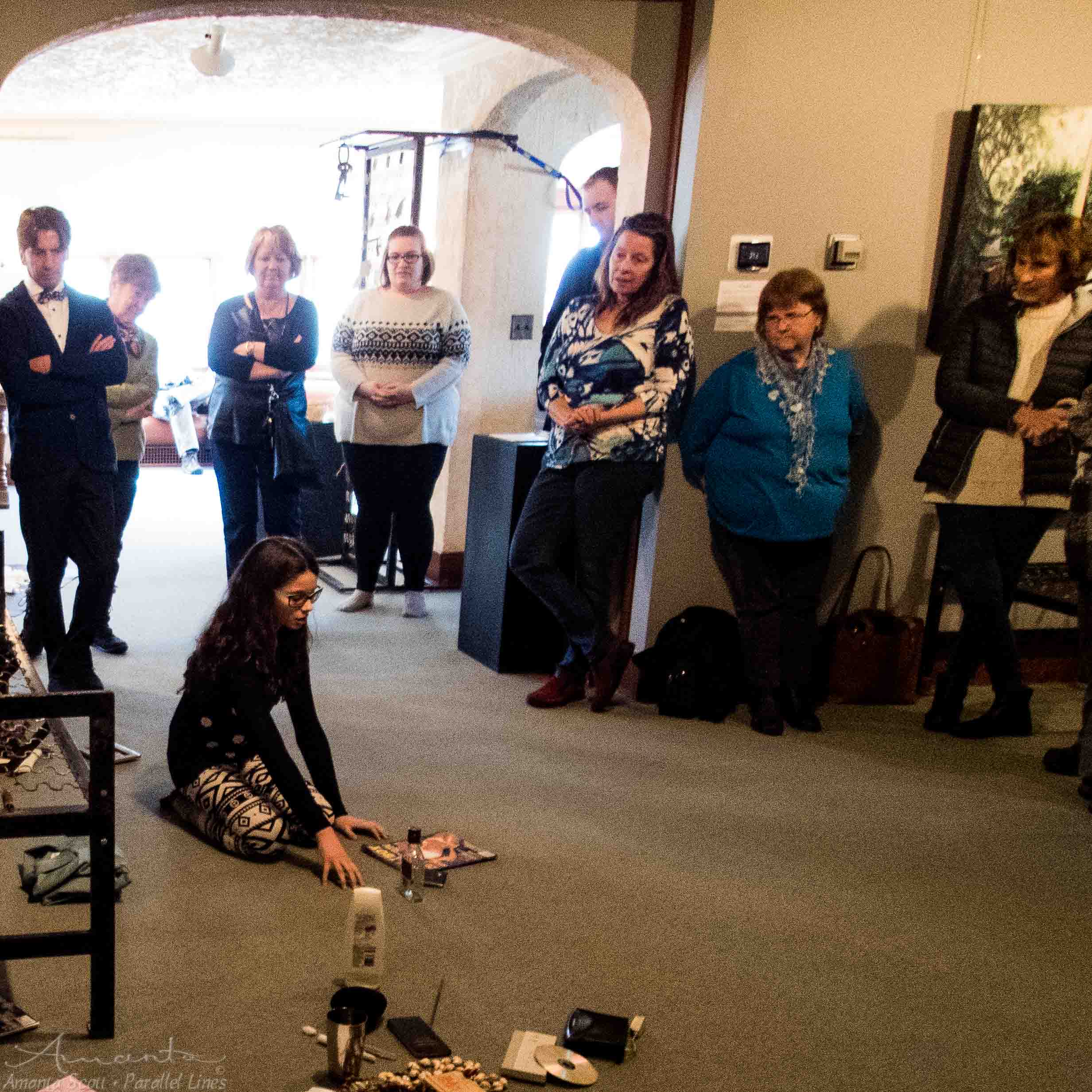
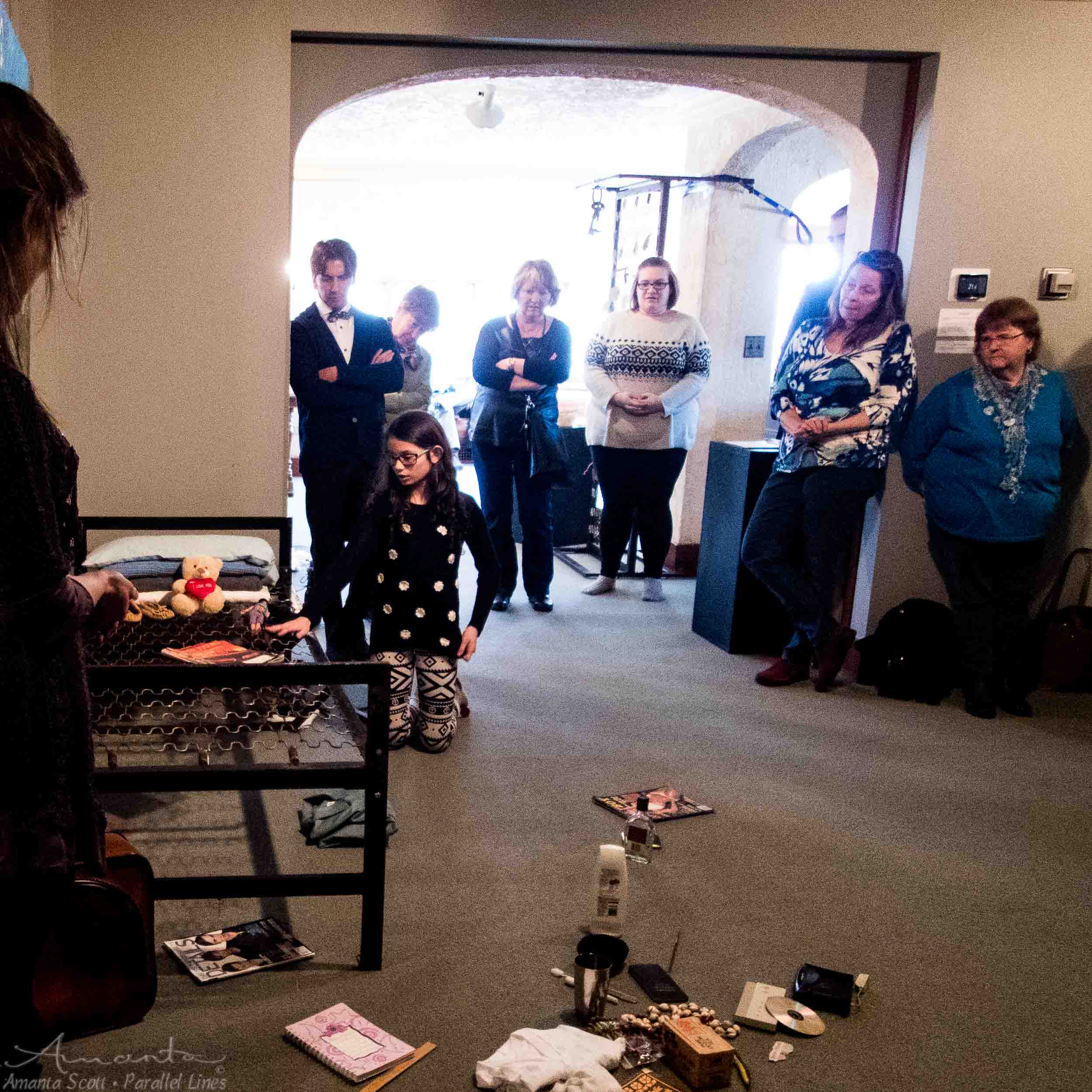
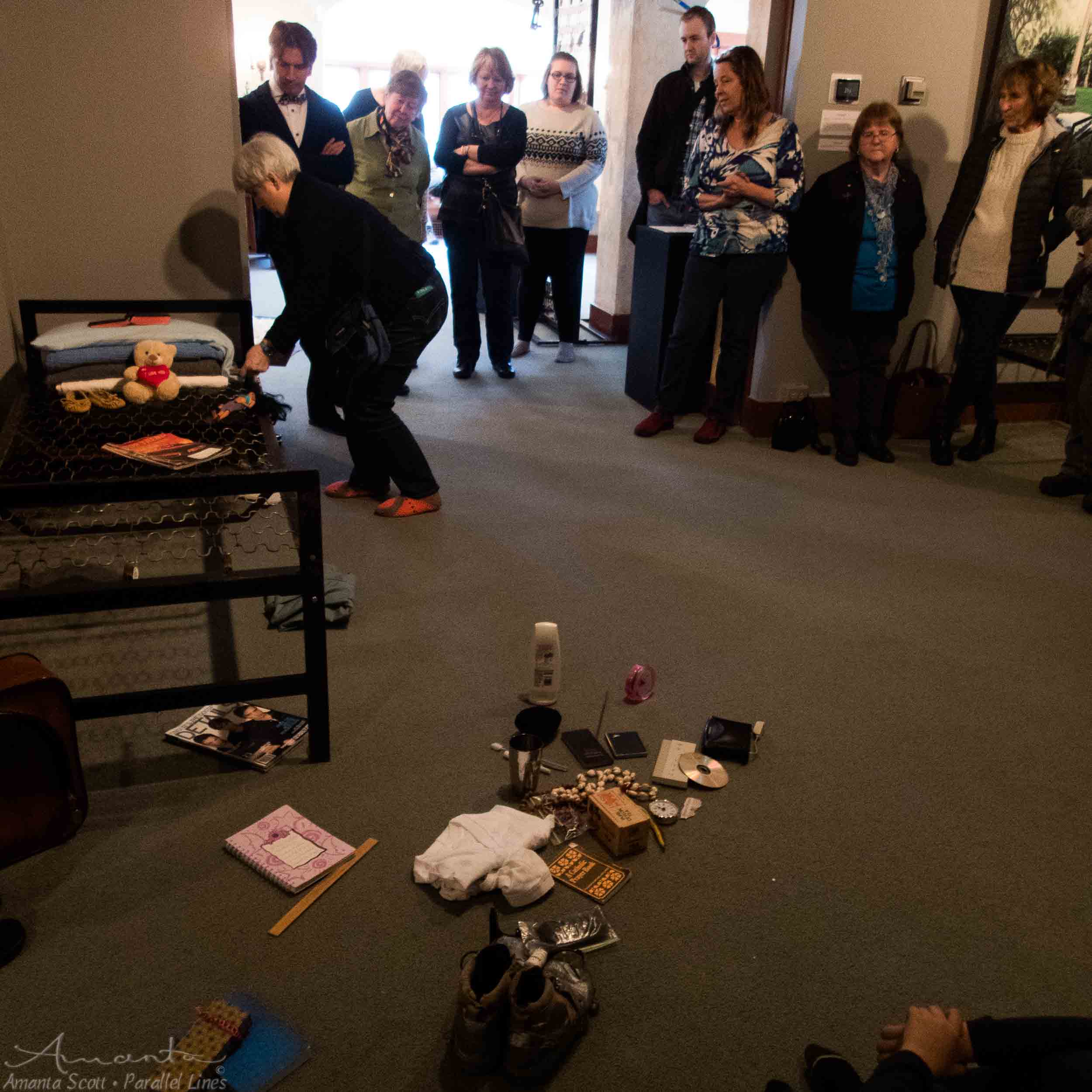
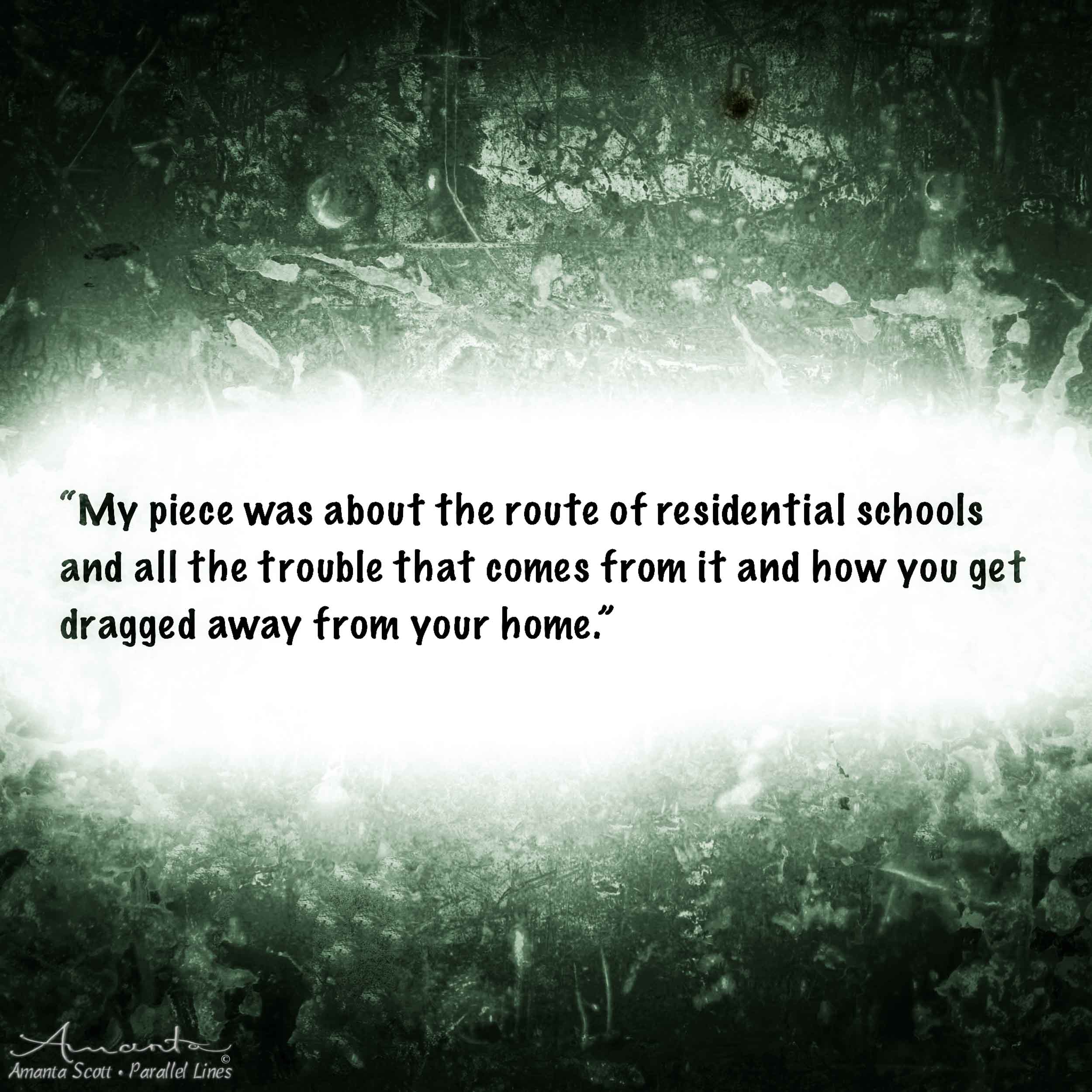
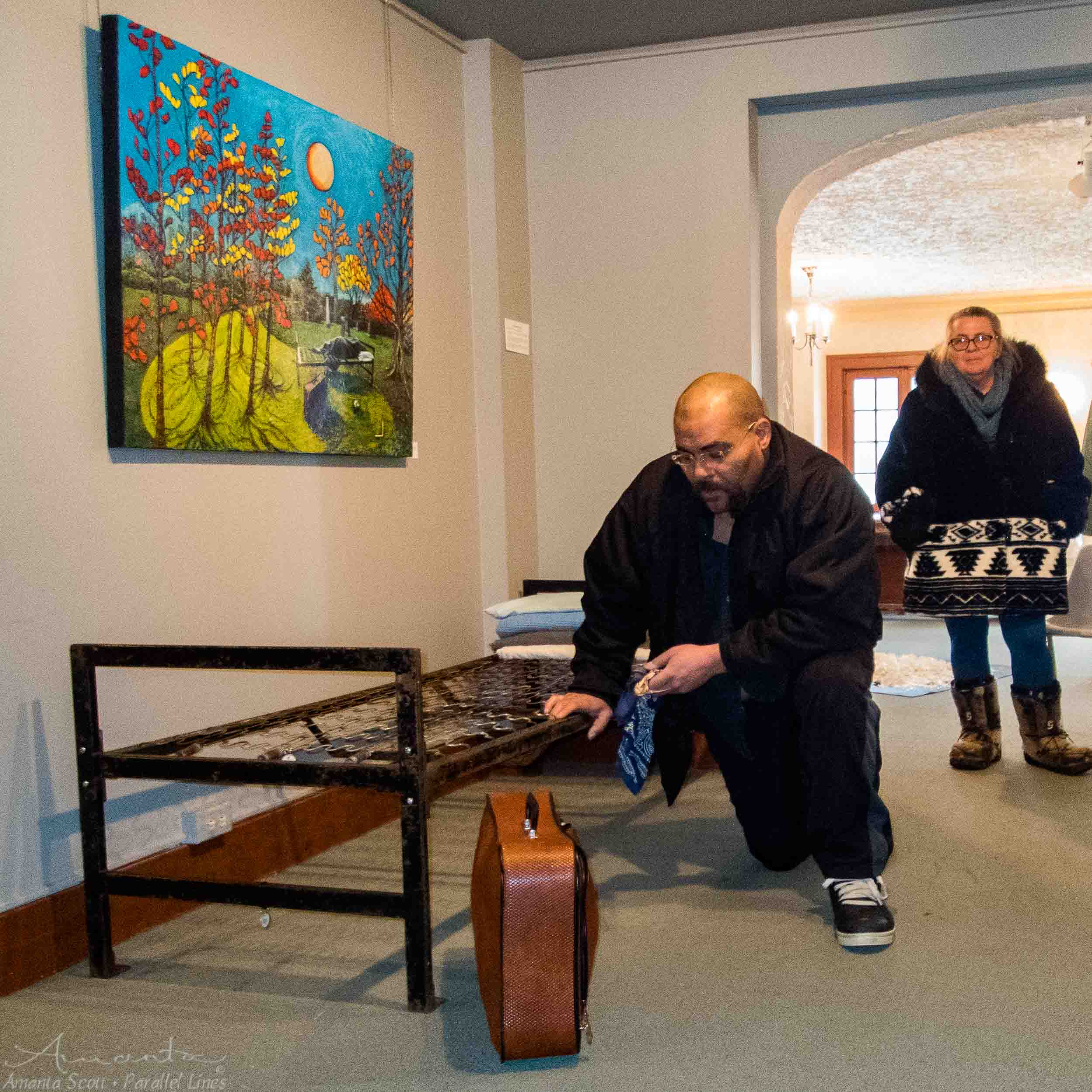

This woman enacted her experience of being imprisoned, forced to surrender her children and ordered to choose between which of her children would live and which of them would die.
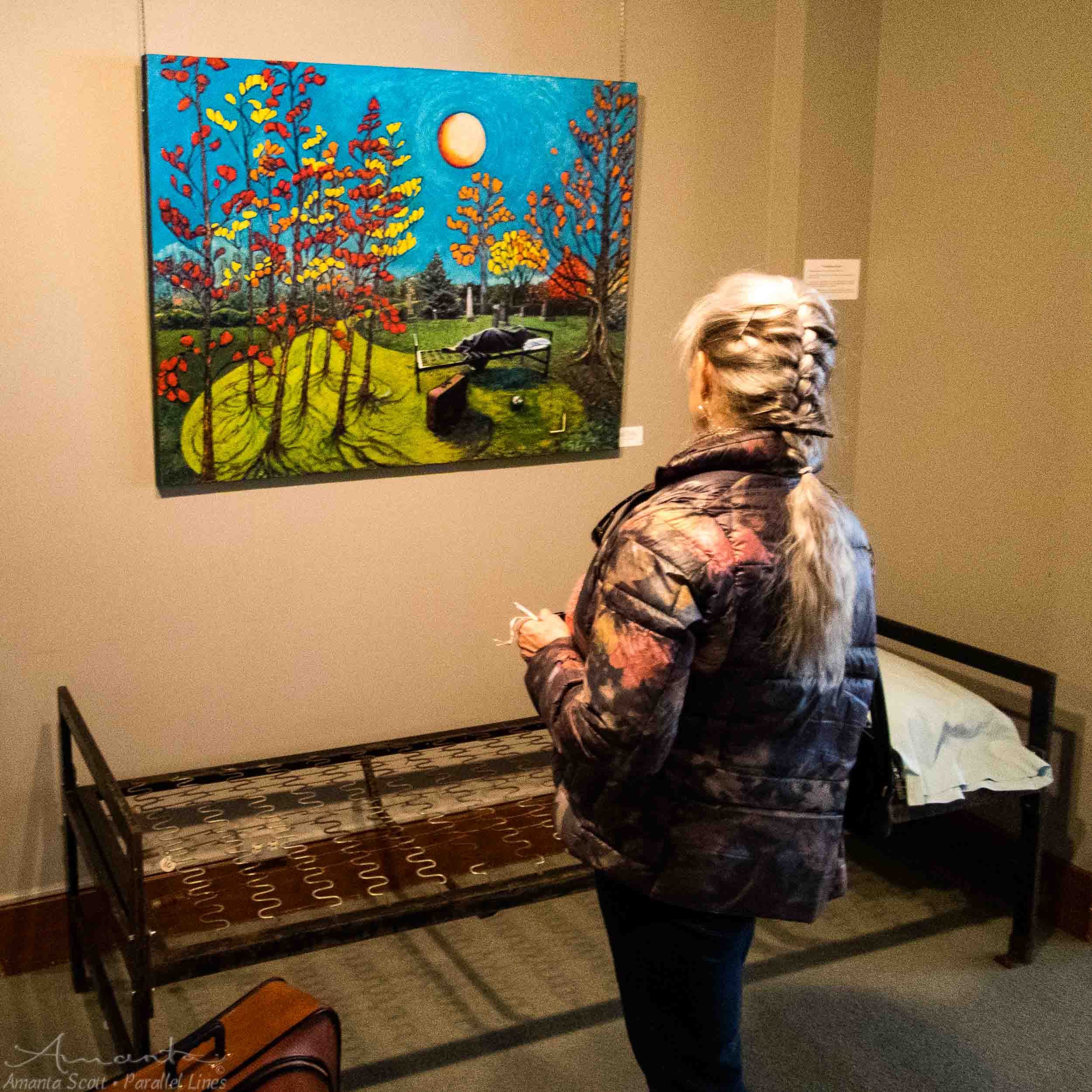
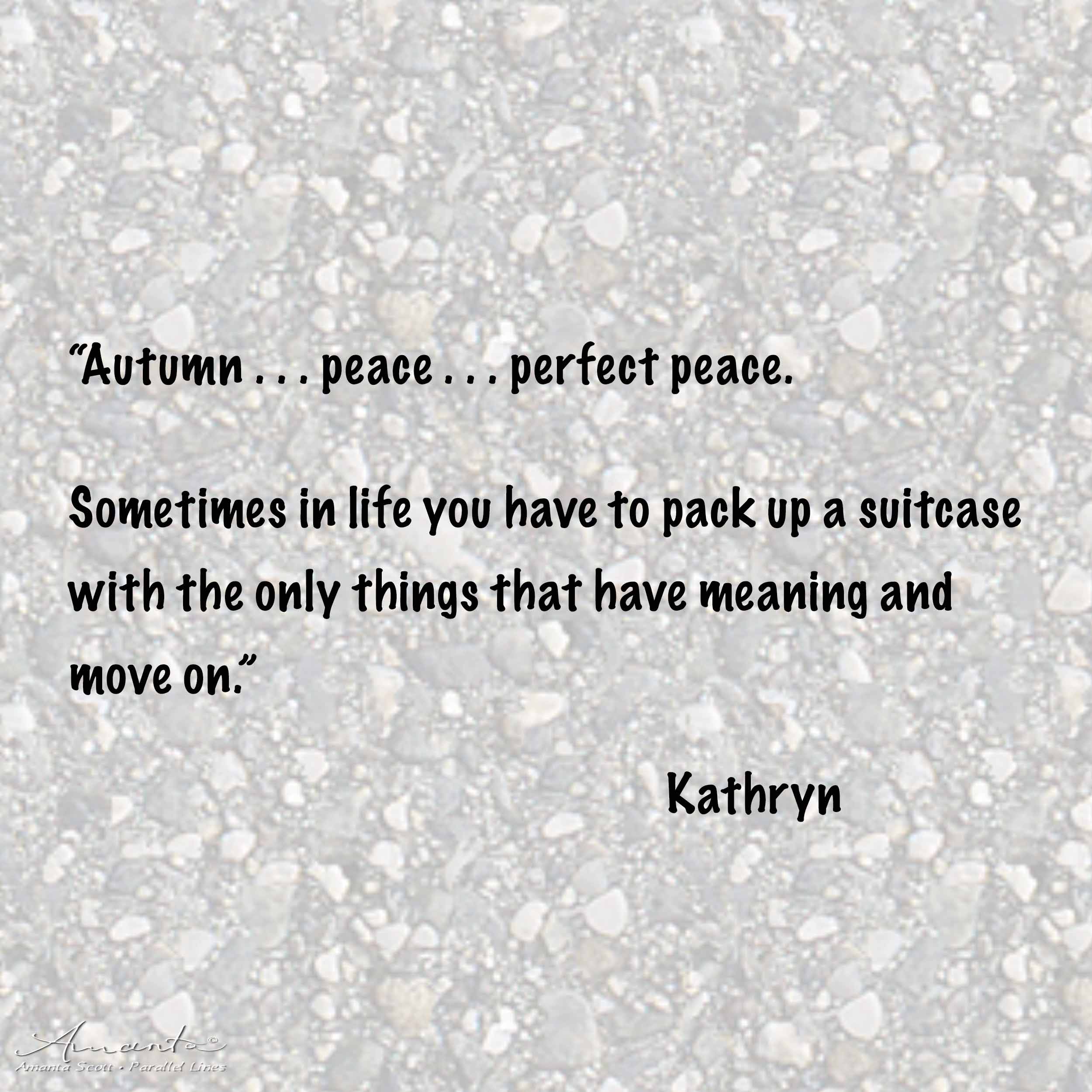

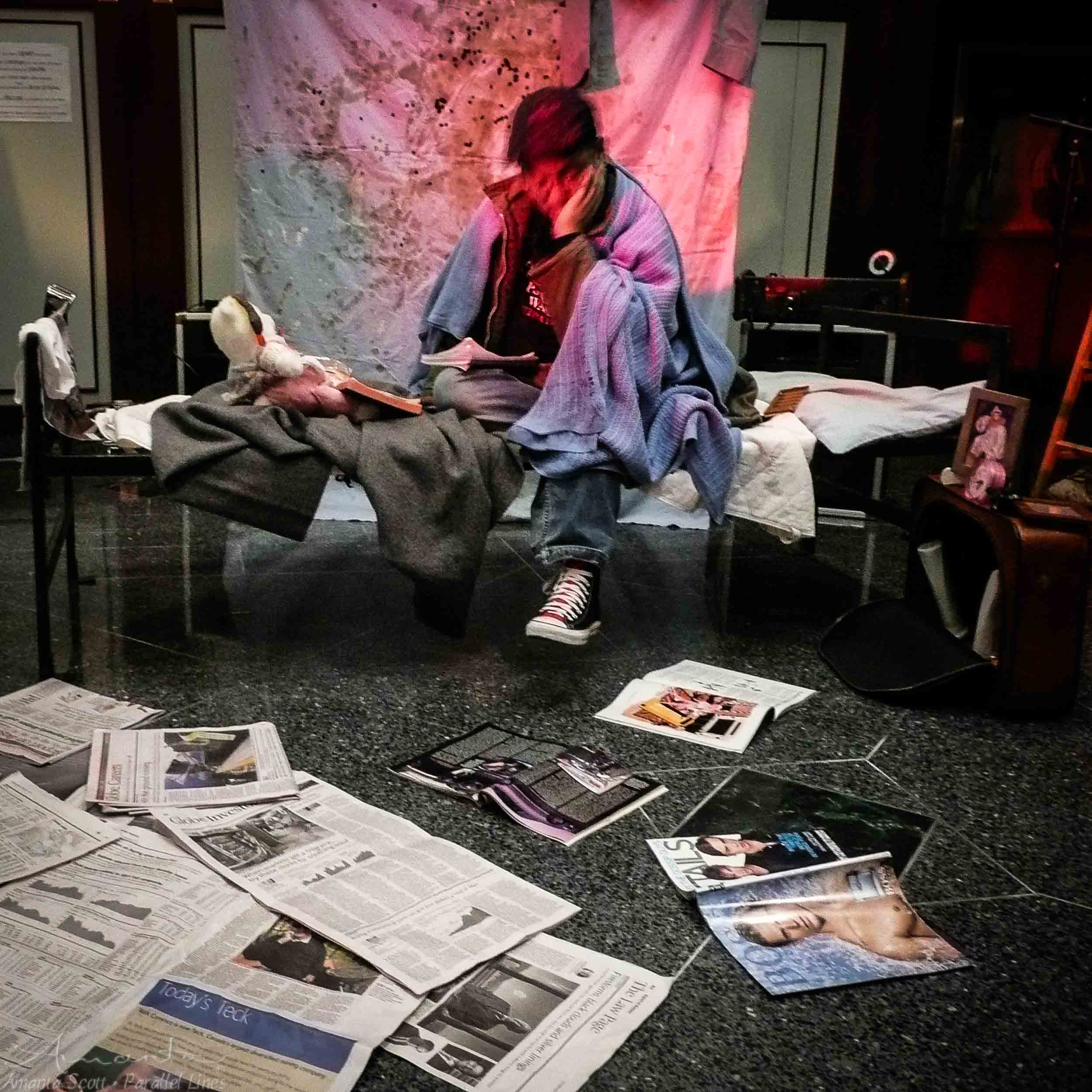
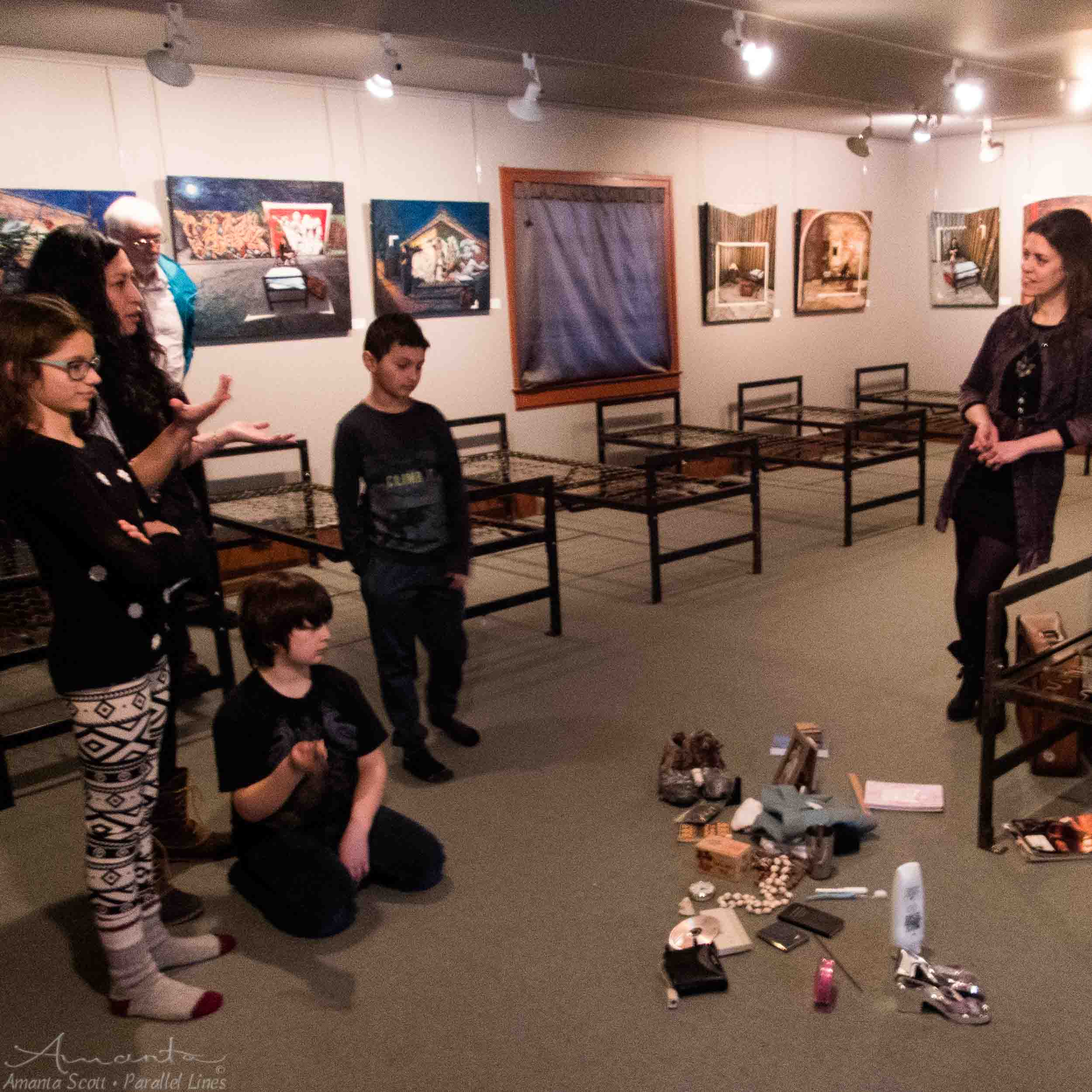
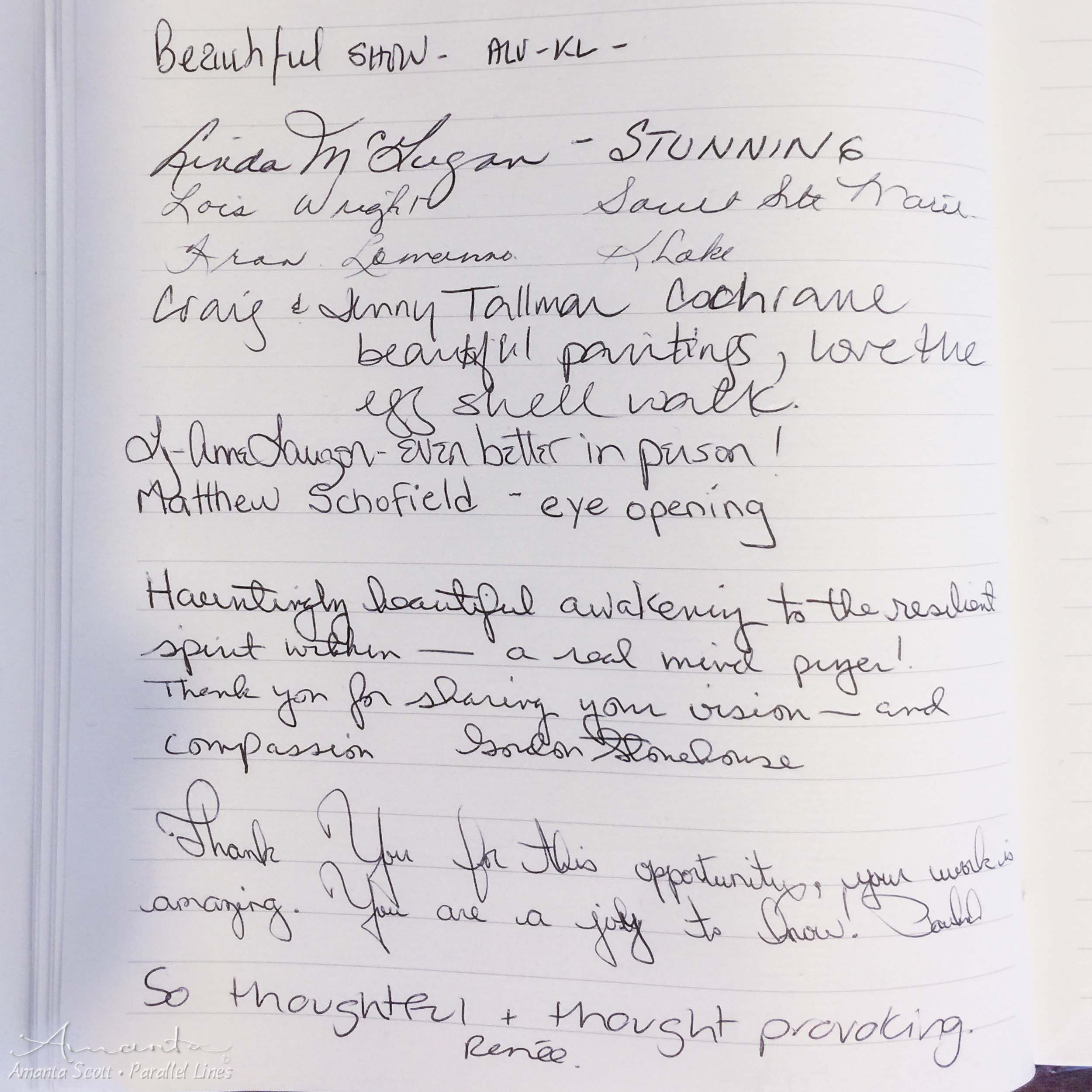
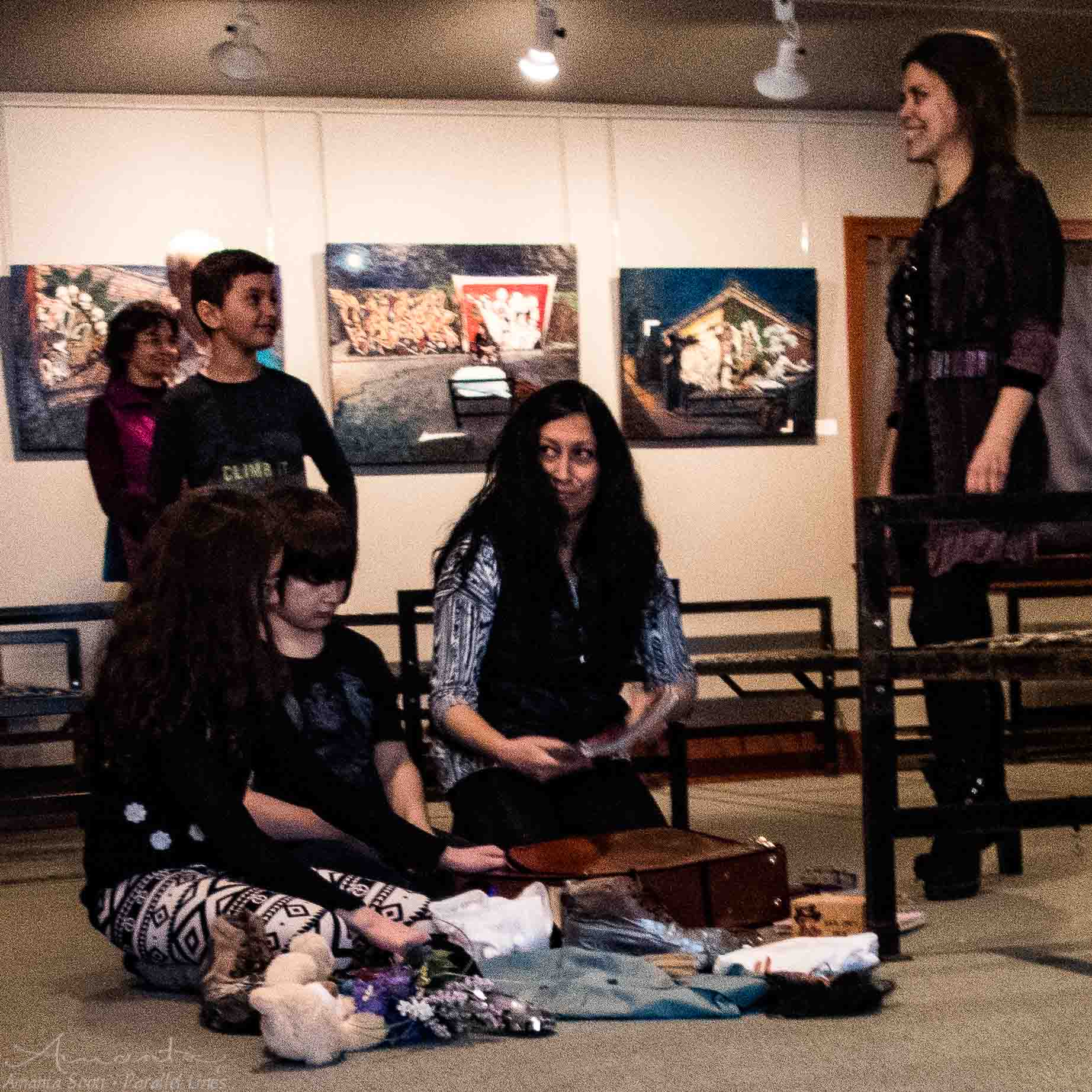
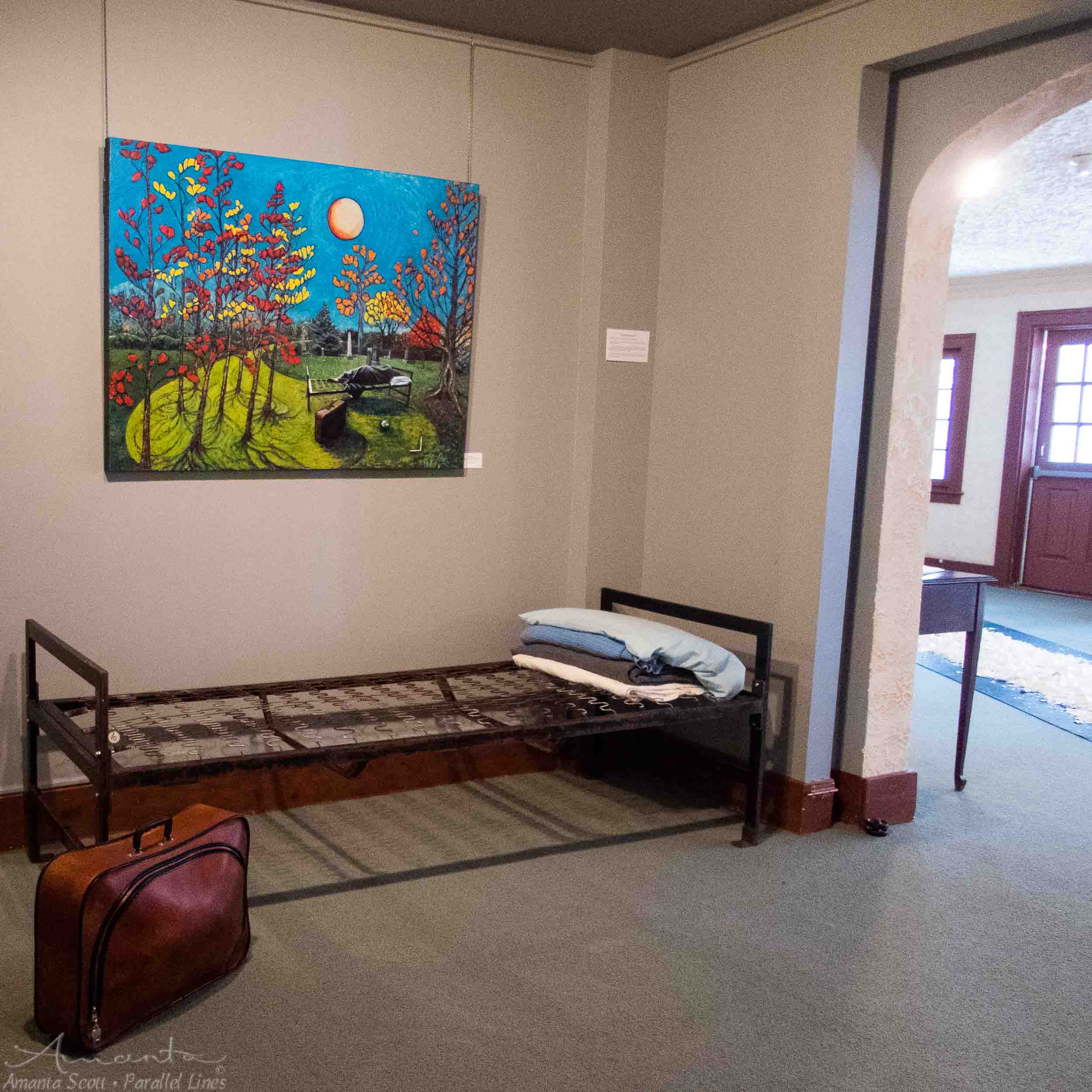
How it works . . .
Participant(s) open a standard-issue, “get-out-of jail” orange suitcase containing various personal items; then, consider and arrange these objects on or around the bed to create their own personal artistic statement.
Immediately afterwards, Participant(s) may, when witnessed by other Visitors, either choose to explain the significance of their installation to their audience; or solicit interpretations from onlookers first. They may decide to explain the work after hearing others' reactions, or leave the work to speak for itself. Either choice is respected.
Visitors, guided by the Artist, Amanta Scott, examine the Participant'(s) creation, interpreting the installation according to their own personal perspectives and associations. Varying interpretations are encouraged; lively discussion frequently occurs. Viewers often remark upon something that the Participant may have unconsciously done.
After hearing other Visitors interpretations, Participant(s) examine their original intentions and their resulting conscious and unconscious choices. They may then choose to explain what they aimed to express; the significance of the arrangement of objects; and share any stories, ideas or feelings associated with the work.
A surprising catalyst for intensely personal, intimate, thoughtful, revealing and insightful installations created by Visitors of all ages, this work creates a forum for creative expression and release.
Matthew - participant in 15 Minutes of Fame installation with Parallel Lines exhibition - Museum of Northern History
“Before I was born my biological dad threatened my mom to kill her and I. So she ran away. My adoptive father was an alcoholic who was empty. Then he met my mom and I and then he was fun. When my brother was born her introduced me to my native cultures. The beads is my and Keara’s friendship. Even though we have different stories we still formed a bond.”
Sky-Lynn — visitor/participant in 15 Minutes of Fame installation with Parallel Lines exhibition - Museum of Northern History
“I want to learn other languages and cultures. But I feel like I am separated between my culture and my career path. The bible is away but yet still showing is because in order to learn I need to put aside my religion to do so.”
Taylor - participant in 15 Minutes of Fame installation with Parallel Lines exhibition - Museum of Northern History
“Kasandra’s death impacted my life. I made a contribute to her resembling her death. Teddy bears were her favourite thing to hug. Lavender was her favourite flower and would sleep next to it. She loved jewelry.
Emily — visitor/participant in 15 Minutes of Fame installation with Parallel Lines exhibition - Museum of Northern History
A week or so after participating in 15 Minutes of Fame at Museum of Northern History, Kirkland Lake, a woman donated this baby’s outfit for inclusion in the suitcase.
She explained that her mother had given her this outfit and that she’d had it in her possession for fifty years. She has disliked pink and disliked dresses all her life.
“My mother was always forcing me into frilly pink outfits. I wanted to be a welder working on cars.”
“I grew up too fast because of how I was taught and because of my extreme anxiety. Once I learned how Canada and Christians treated natives I was mad and ashamed.”
Keaira - visitor/participant in 15 Minutes of Fame installation with Parallel Lines exhibition - Museum of Northern History
Since its inception, when 15 Minutes of Fame premiered at the Art Gallery of Algoma (2005), no two participants have conveyed the same idea.
Refugees, former inmates, juvenile delinquents, survivors of Canadian residential schools, prostitutes, victims of incest, insomniacs, workaholics, soldiers, adults, children, seniors, travellers — literally anyone who has slept or attempted to sleep in a bed — everyone has their own unique story and perspective to share.
Visitors' Installations
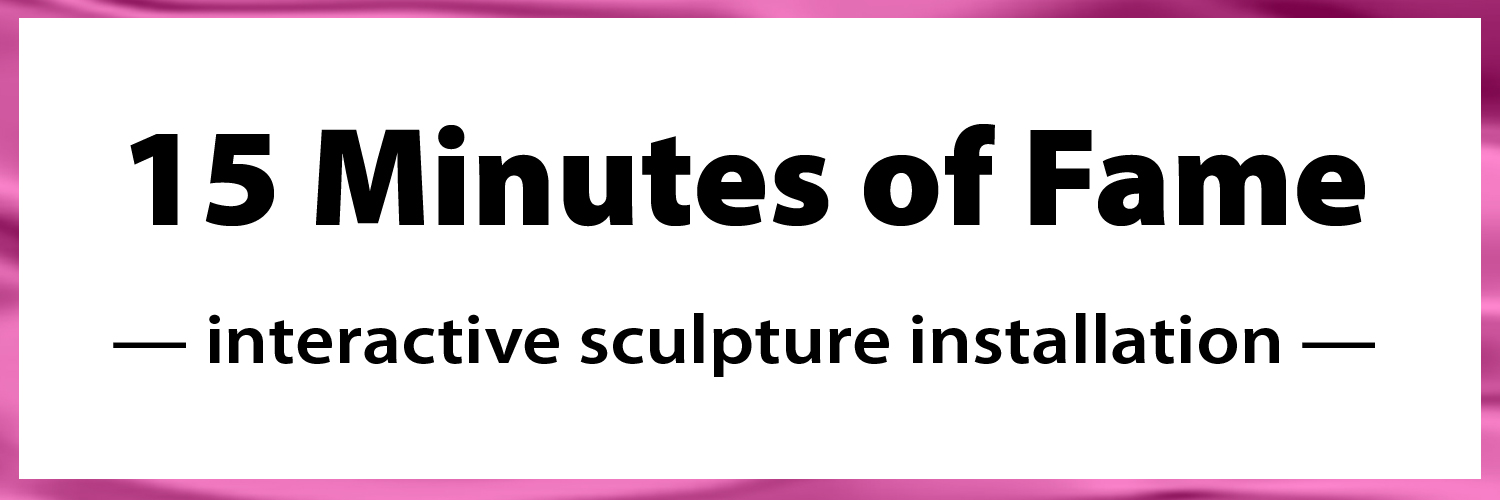


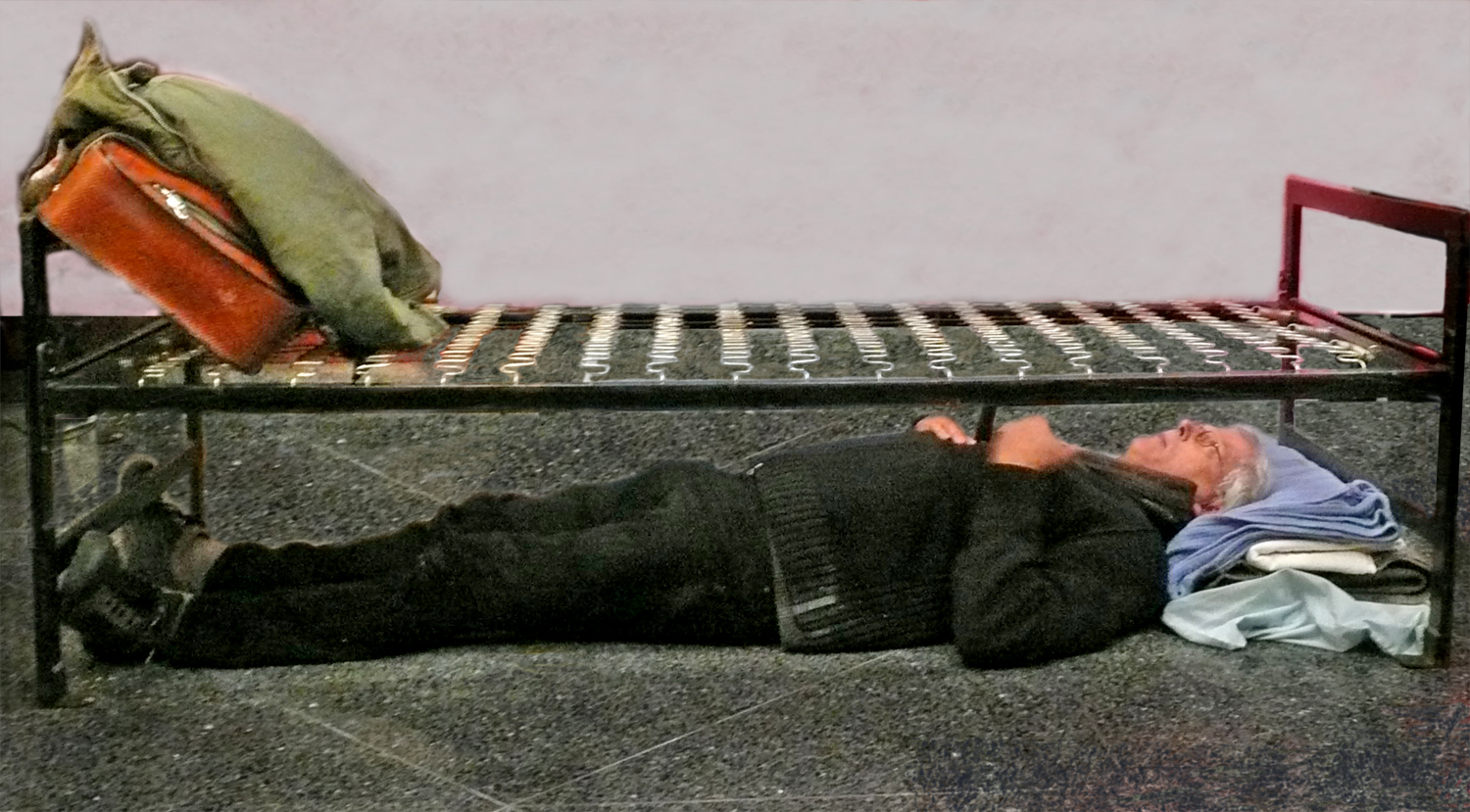
A former inmate shared his experience: — “The safest place in prison was under the bed.”
Hearing this, a large Italian man burst out —
“Are you kidding? I spent half my adult life in prison. You’d never catch me under a bed.
I ruled the place!”
During one exhibition, a disabled woman spoke of being paralyzed by a drunk driver; descending into alcoholism and despair; losing her family and her home; and ending up living in a shelter:
“It’s like a prison — the only difference is you can come and go”.
Finally, she said, she decided to rebuild her life, began studying to be a social worker and learning to walk again —
“It only took eleven years.”
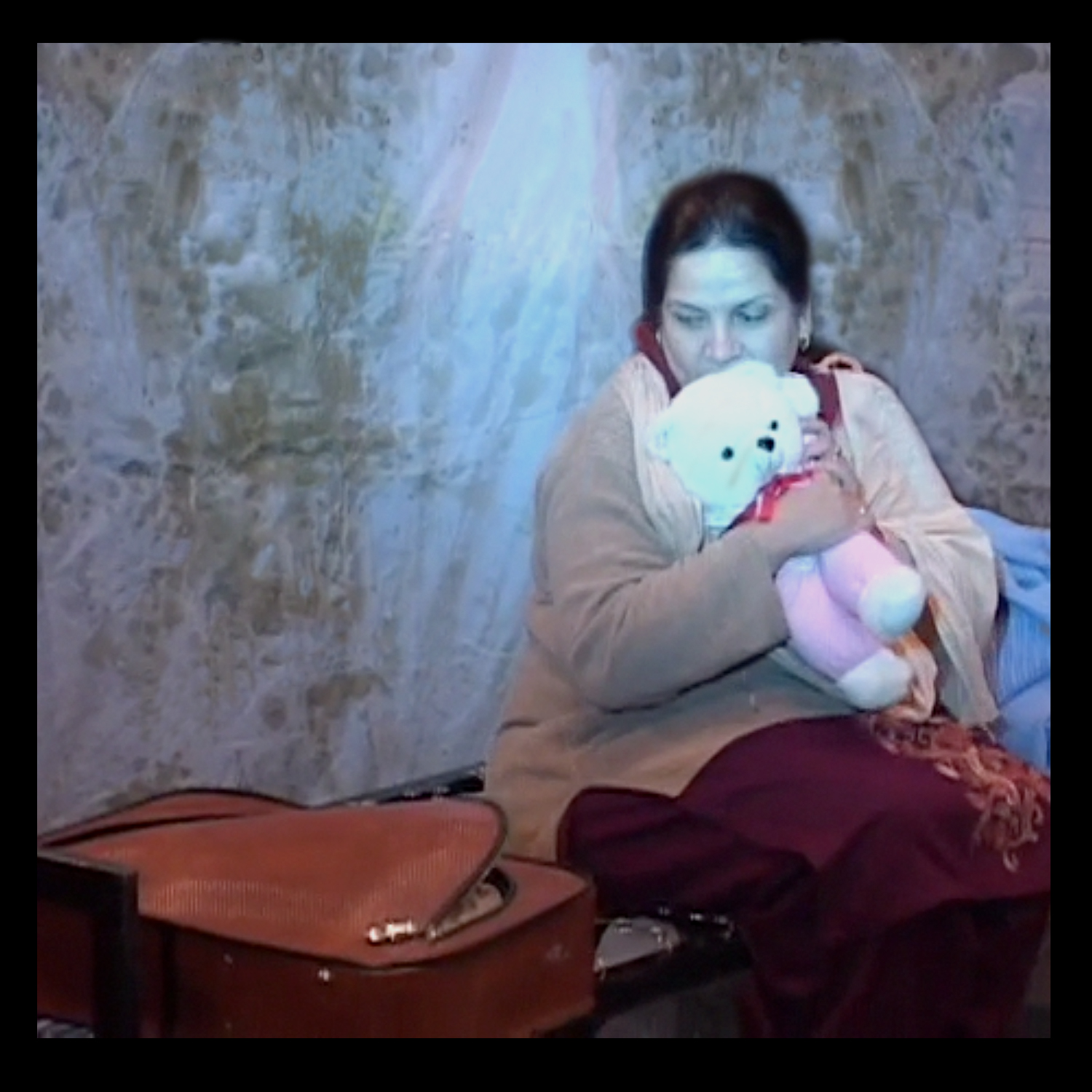

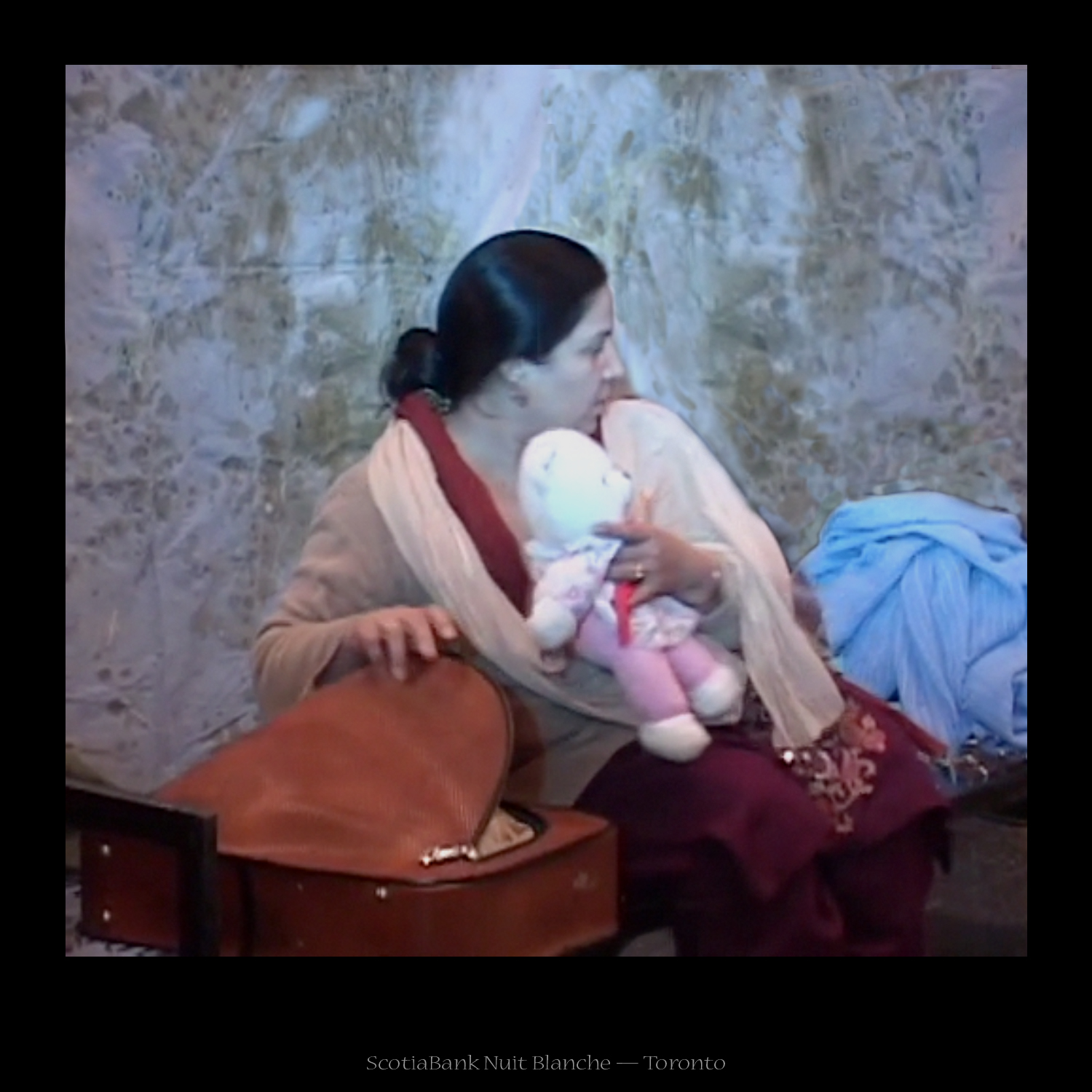
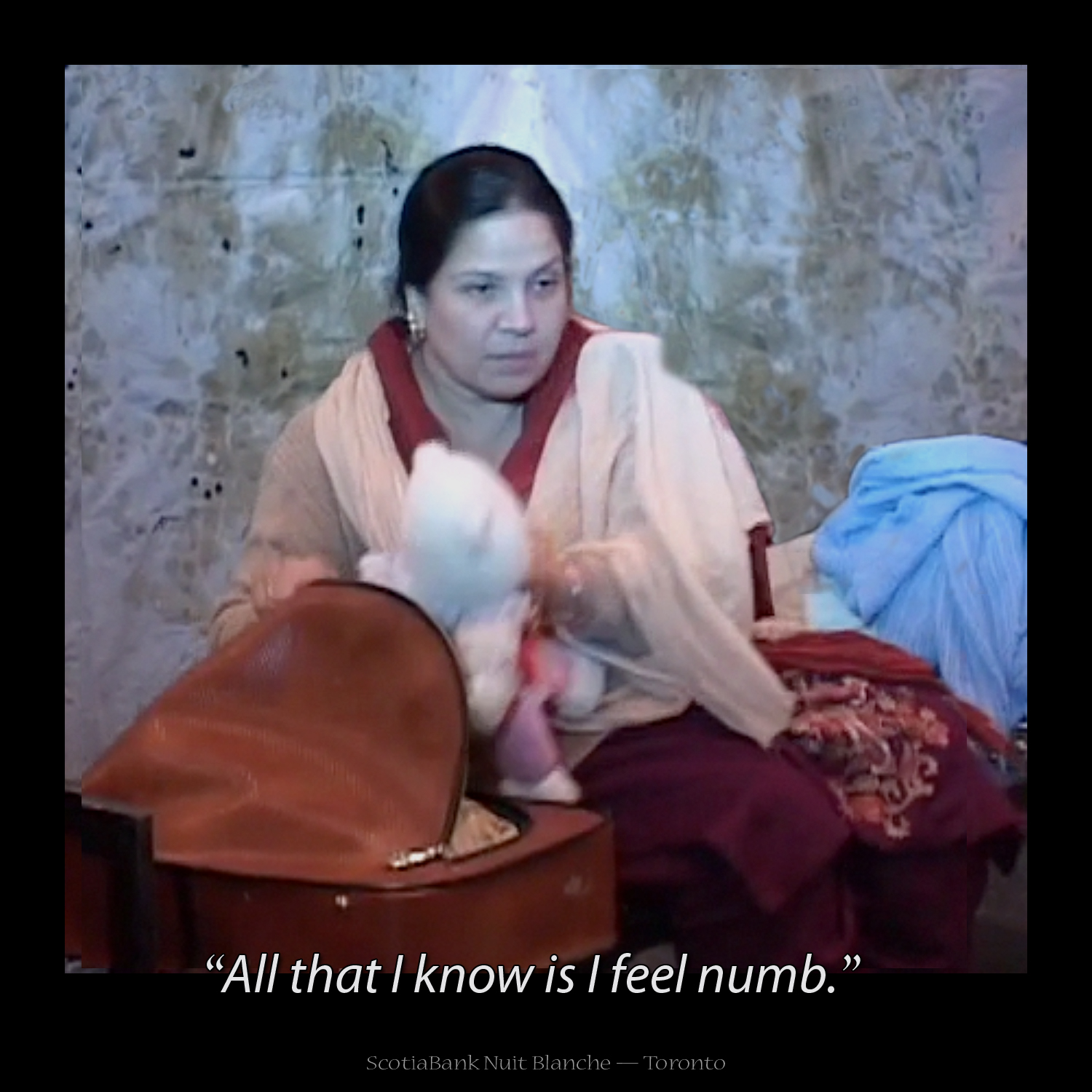
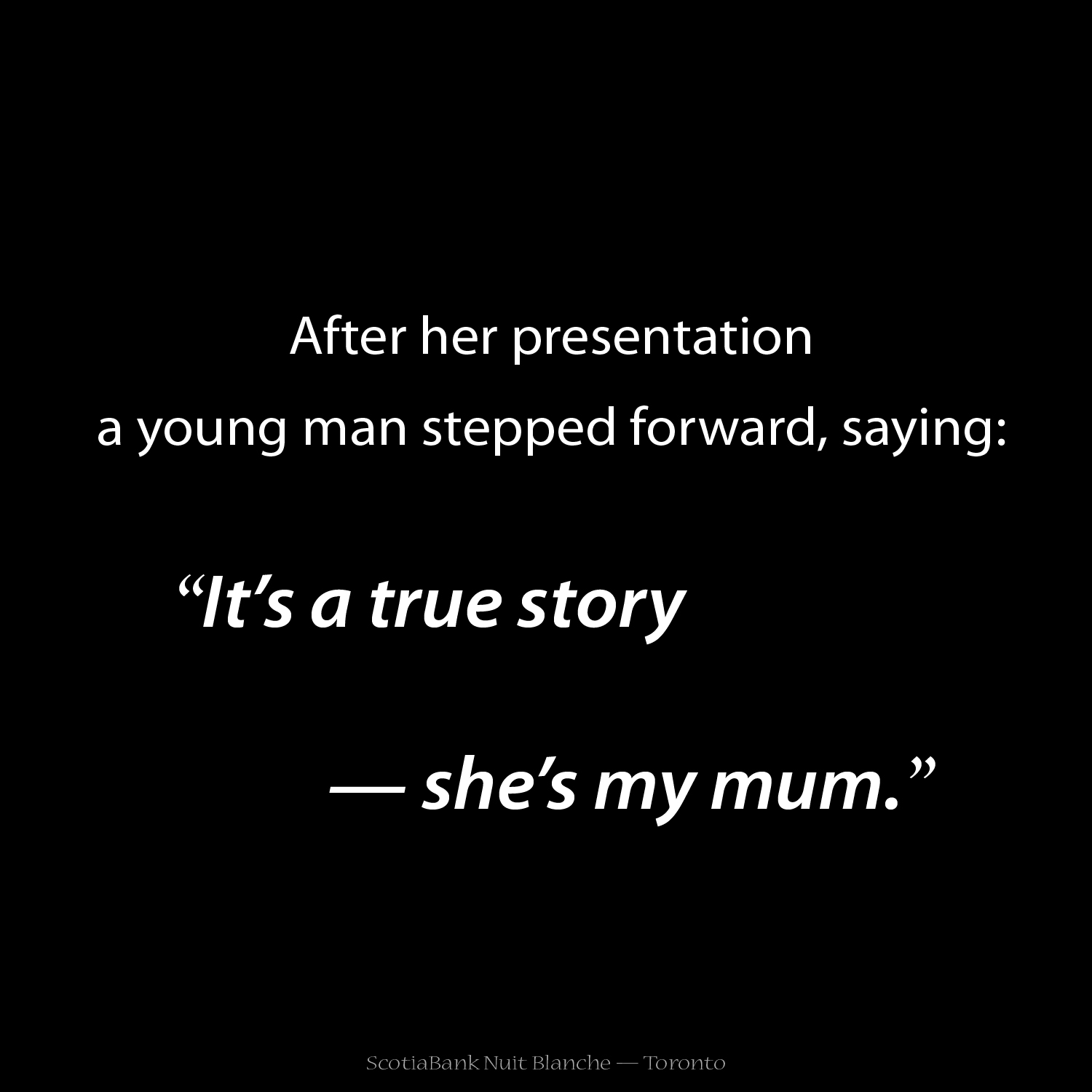
At another exhibition, a Sri Lankan woman enacted a harrowing scene.
Later, through a translator she spoke of being imprisoned, forced to surrender her children and ordered to choose which one would live and which one would die.
“I was imprisoned. I was there a long time. All I know is I feel numb."
As other Visitors reacted to her story, a young man spoke up —
“It’s true. She’s my mother.”
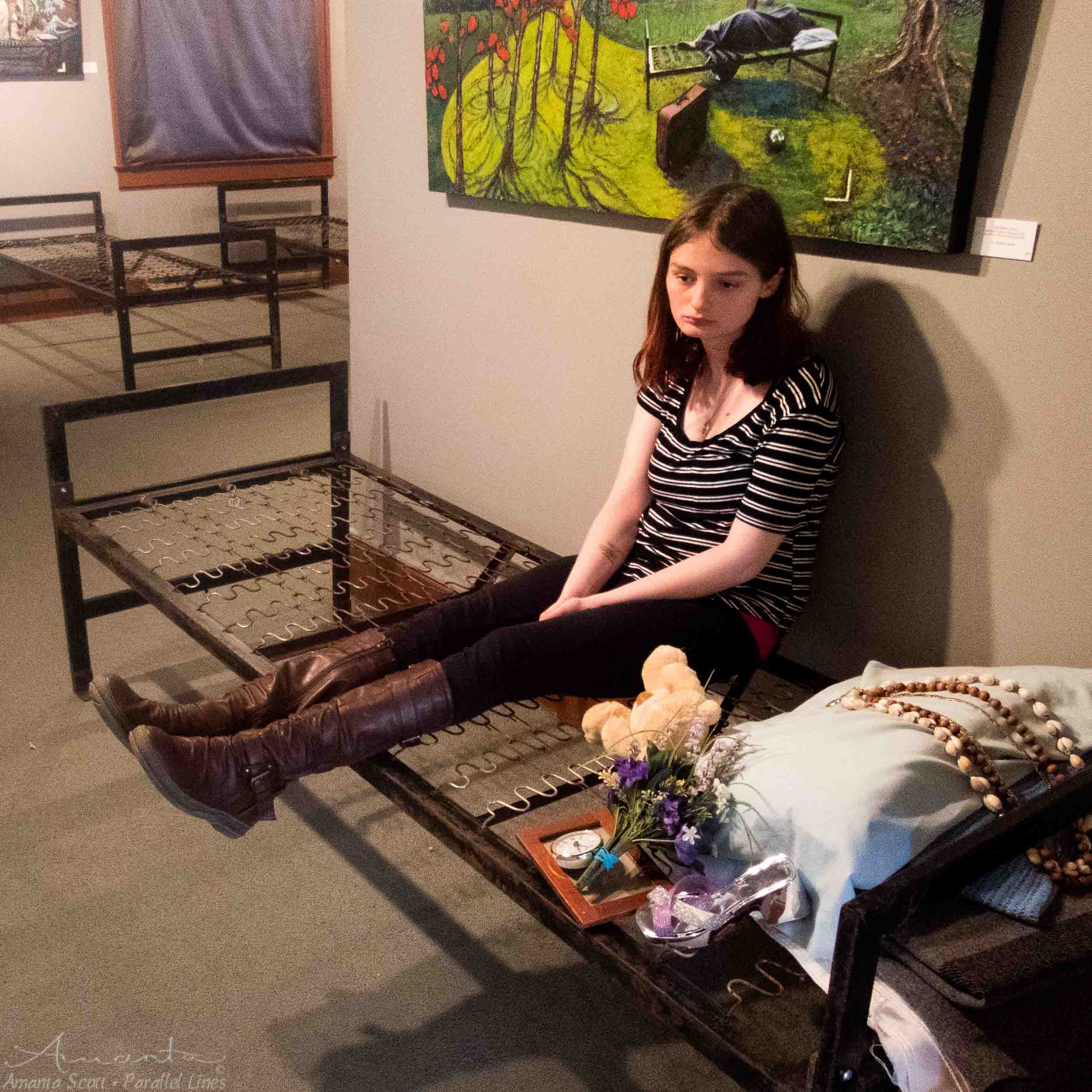
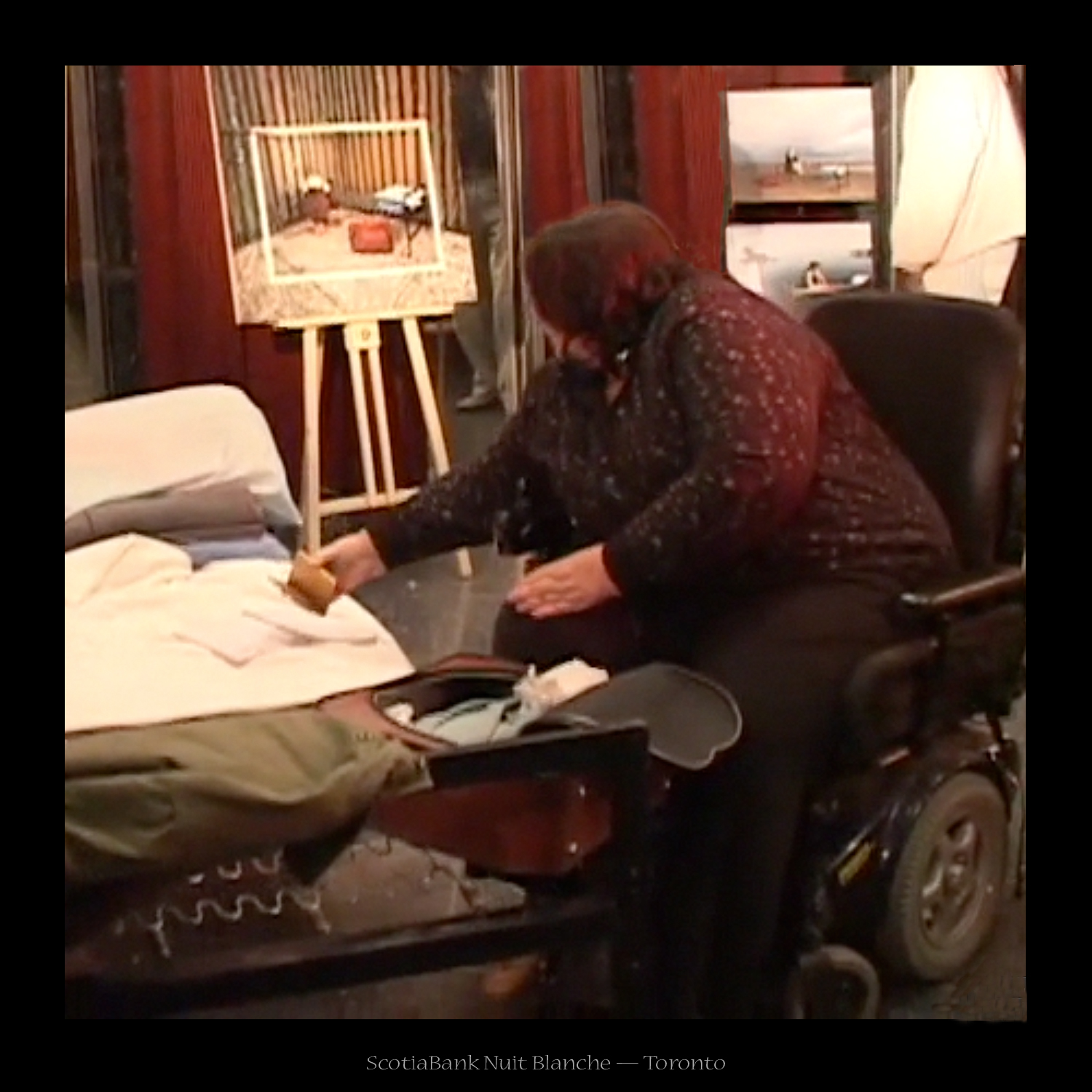
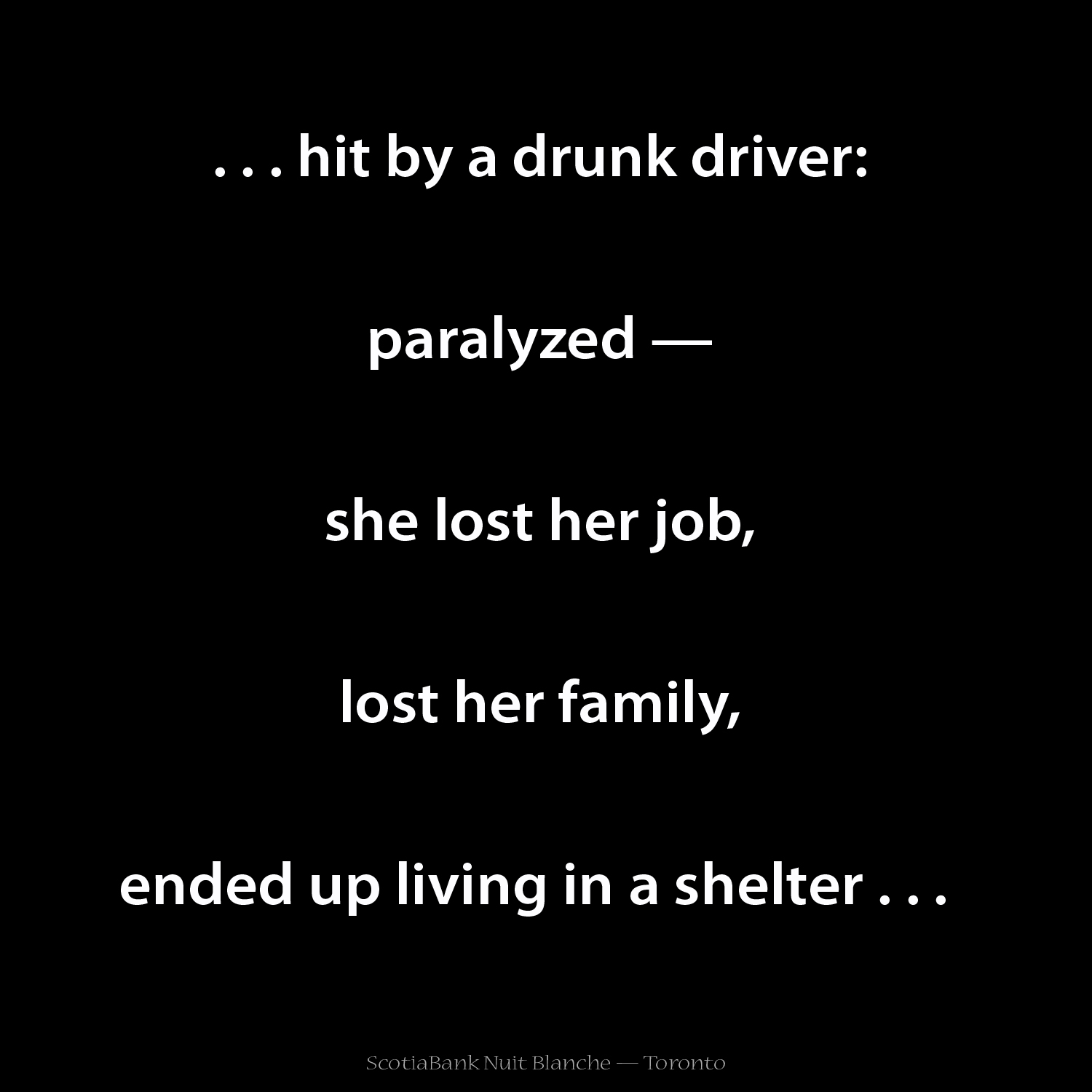
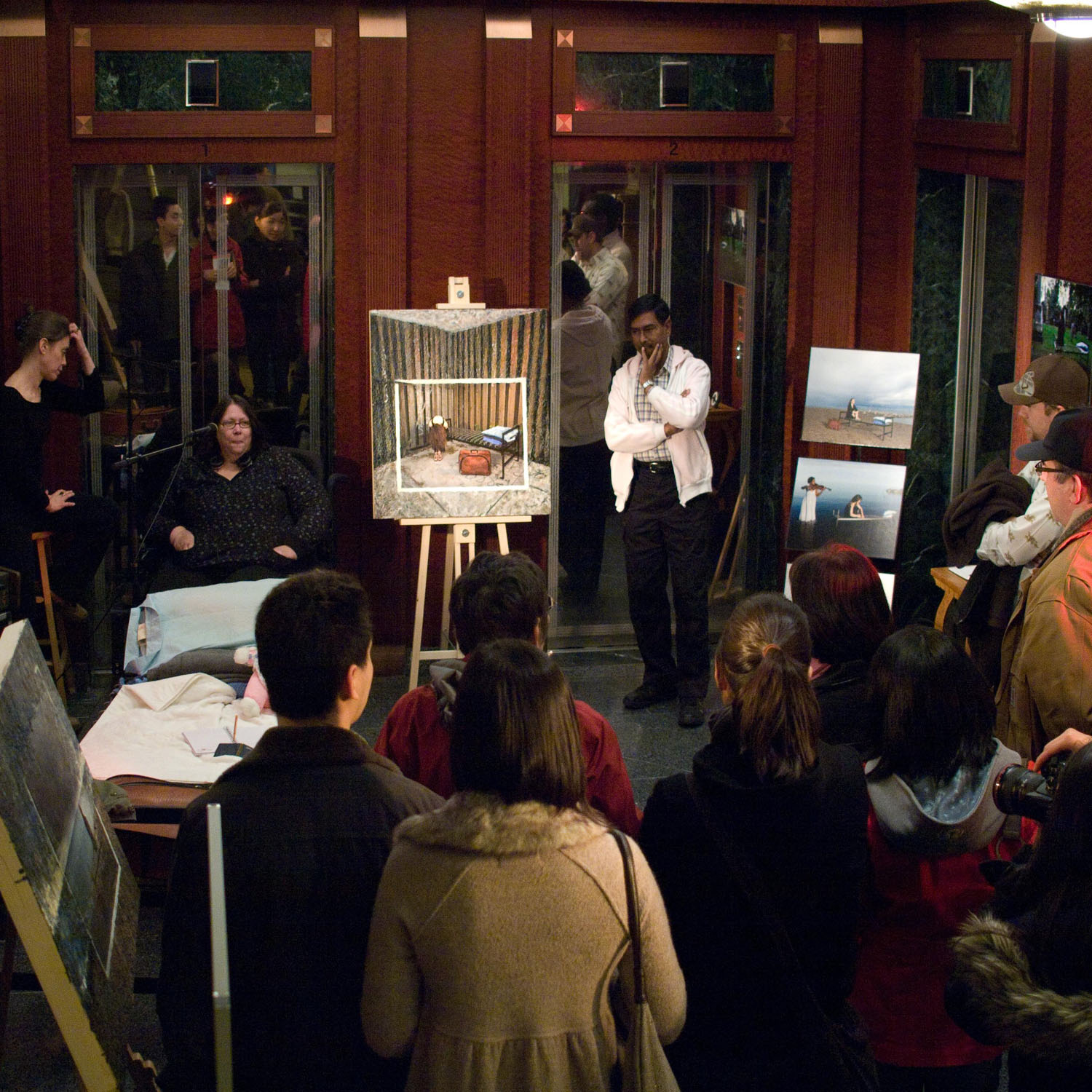
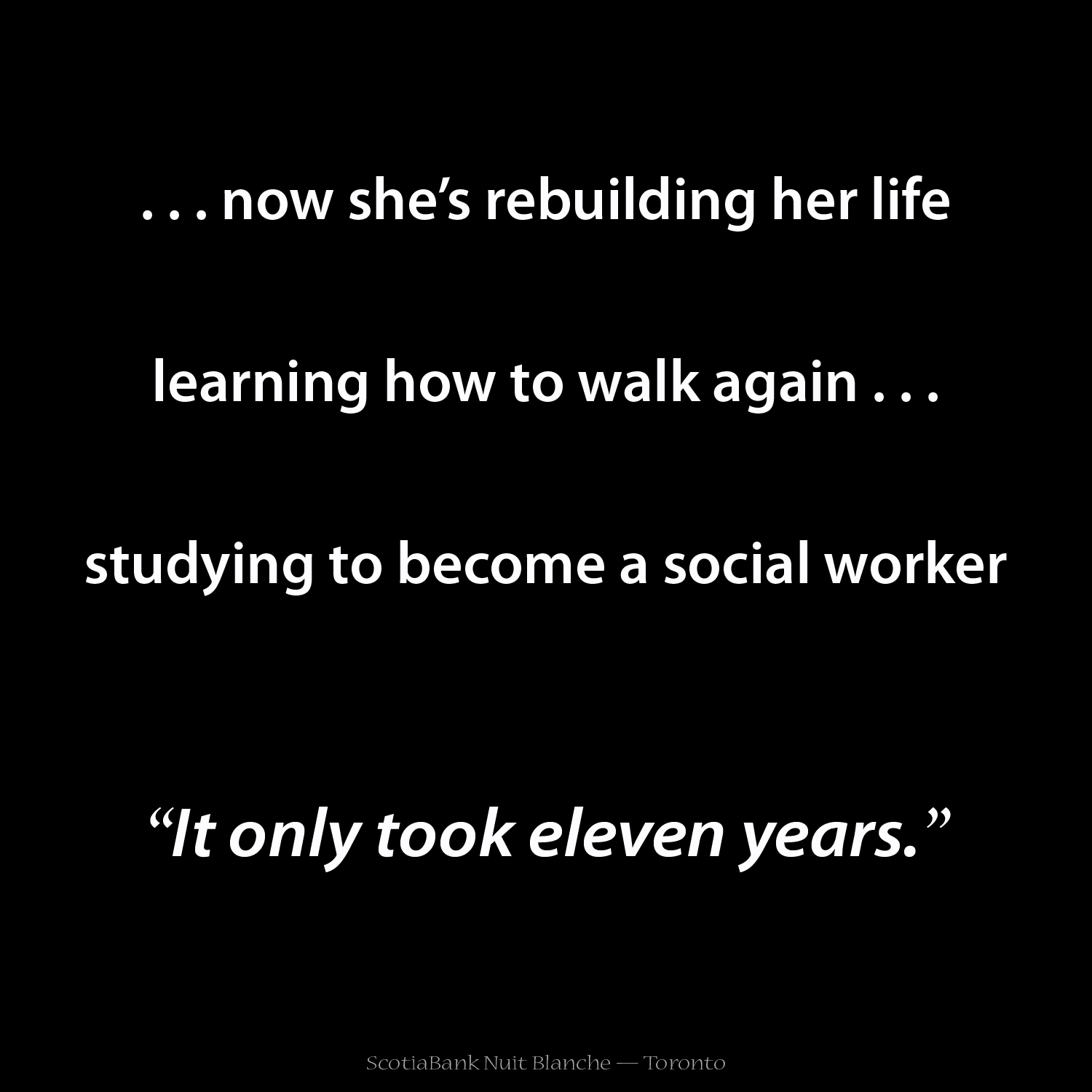
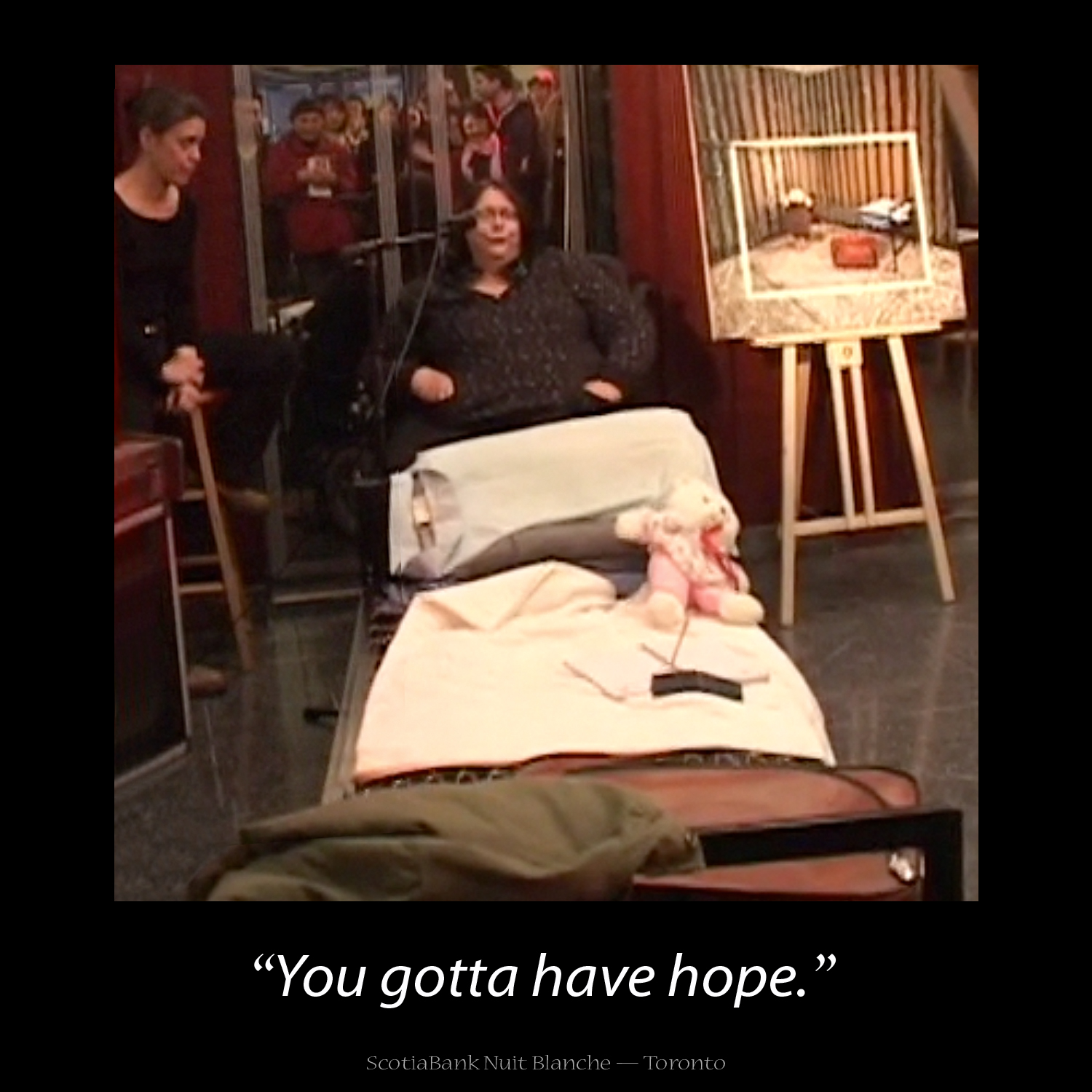









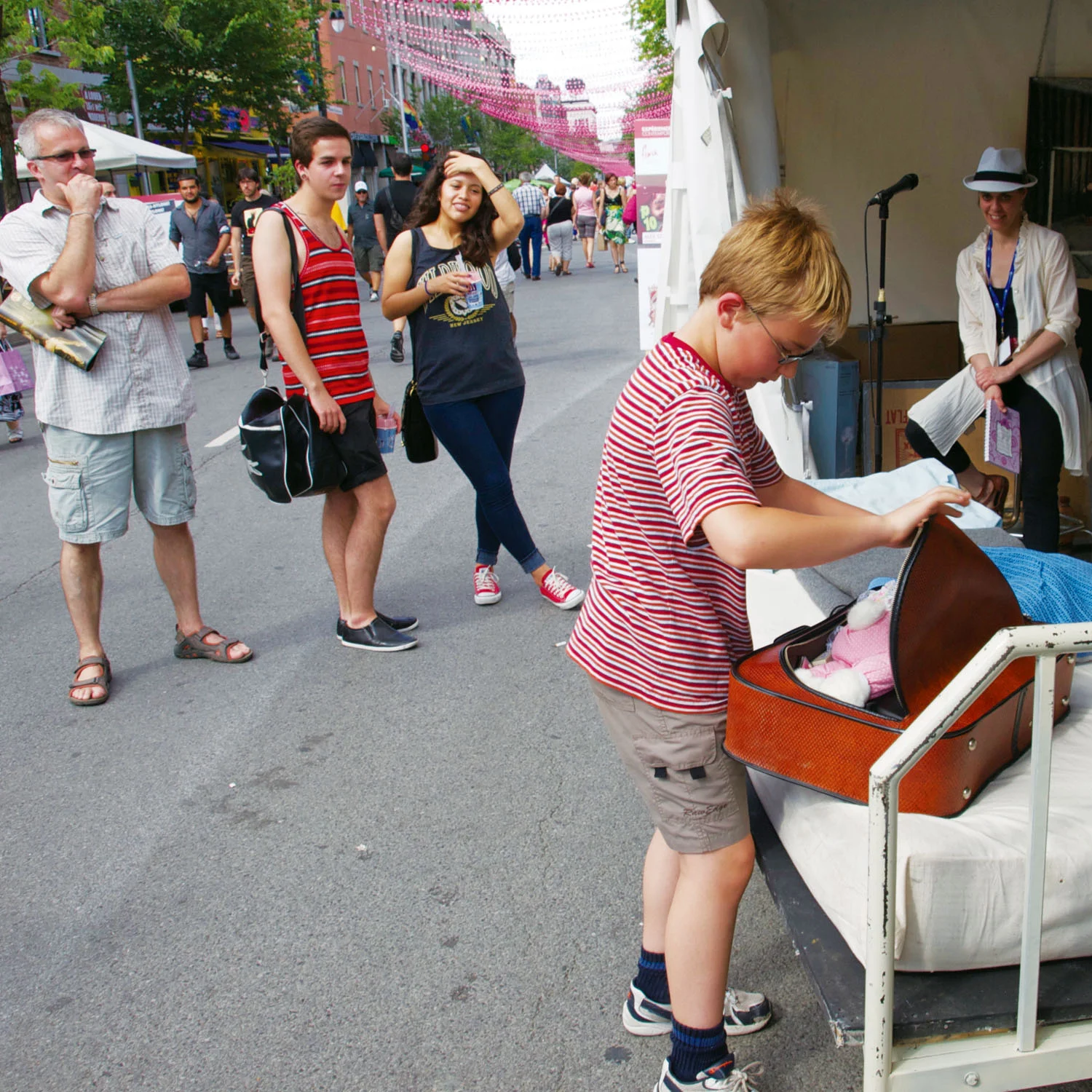









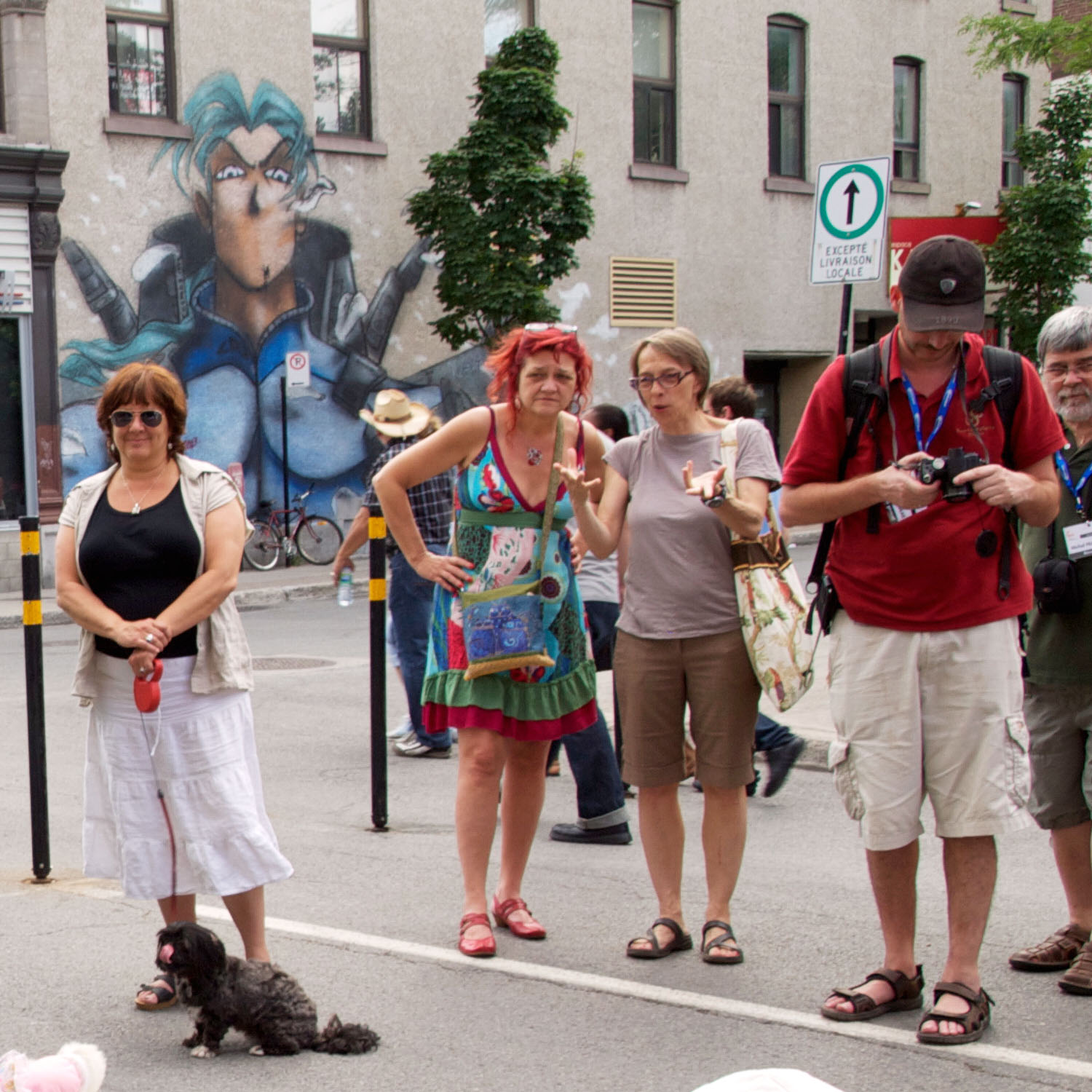







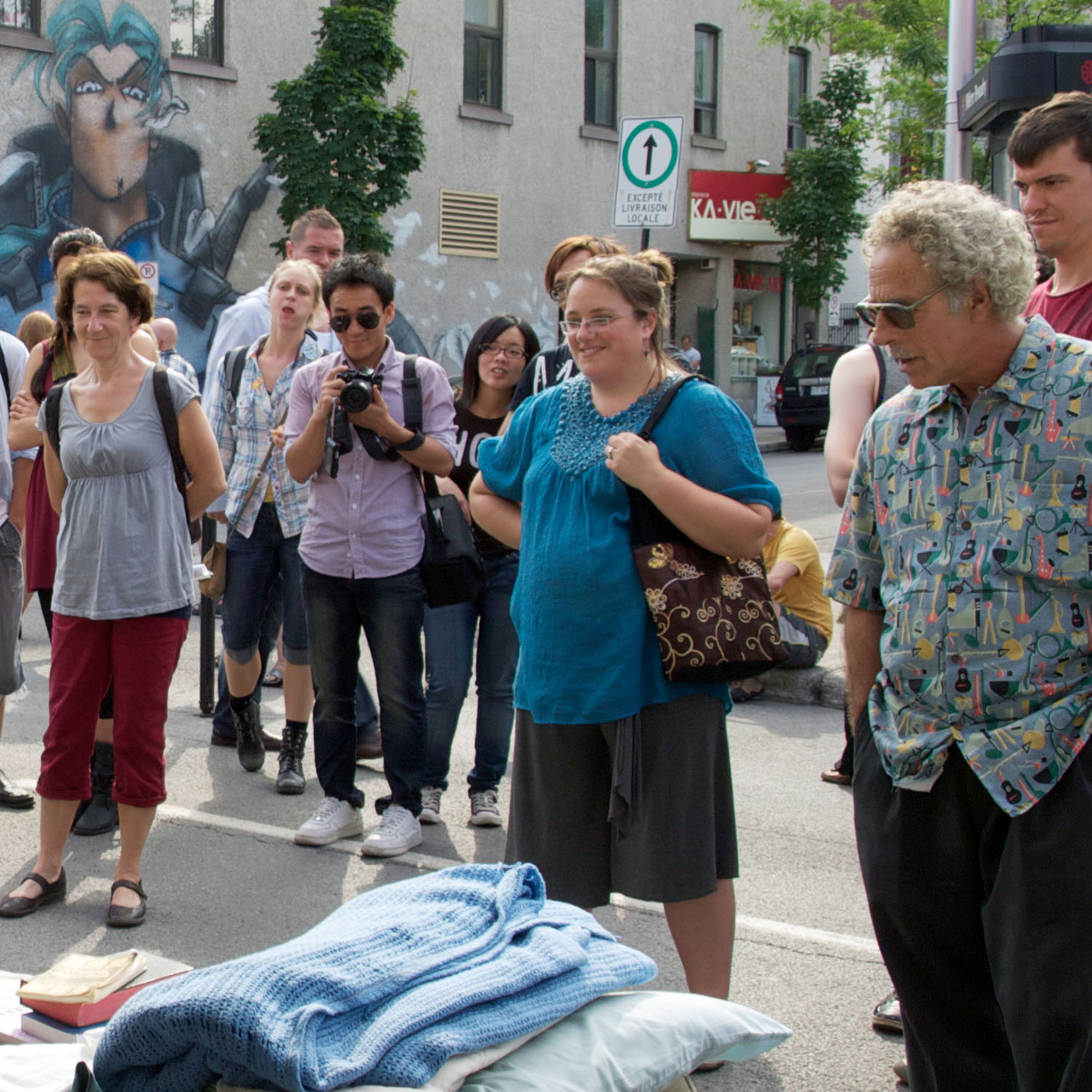
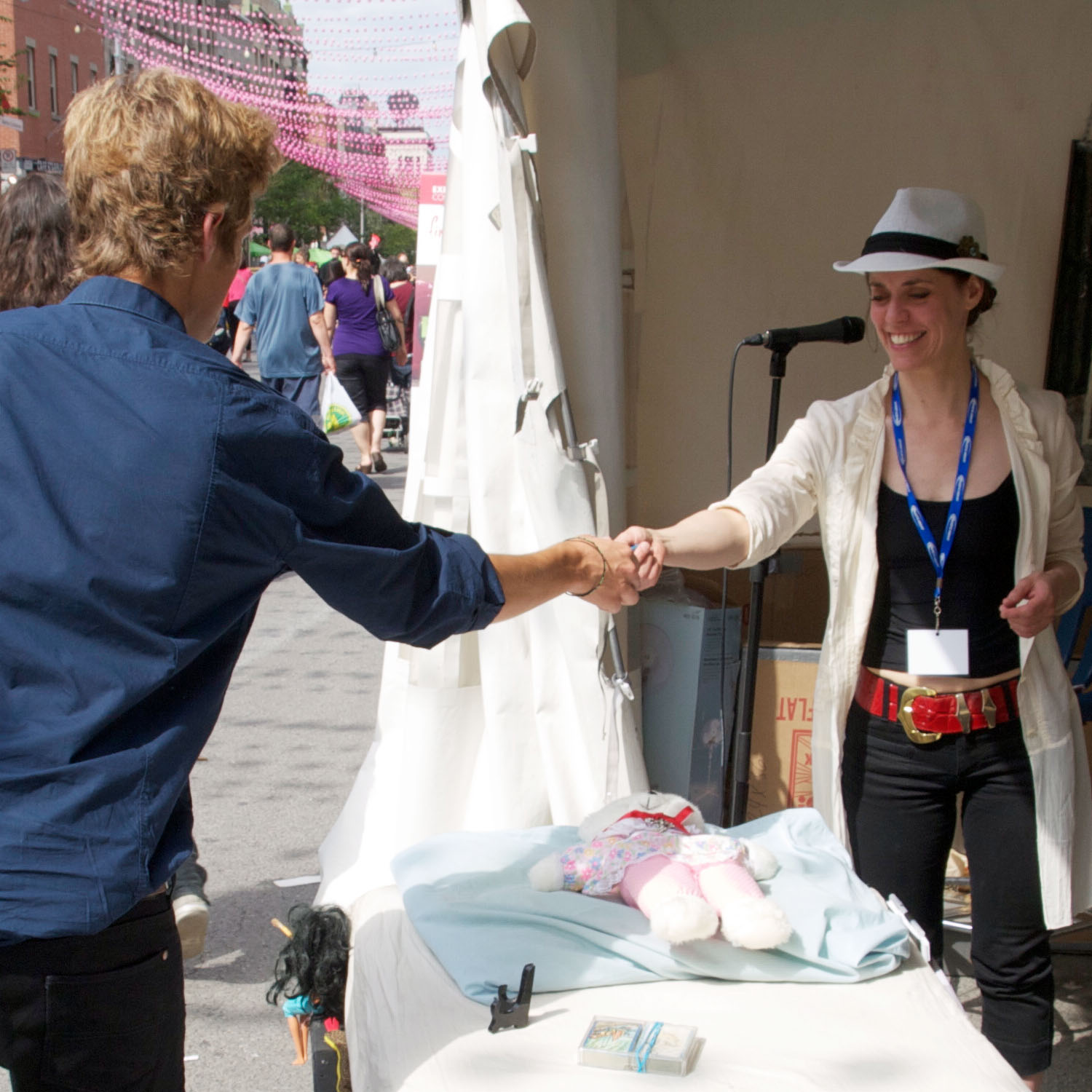





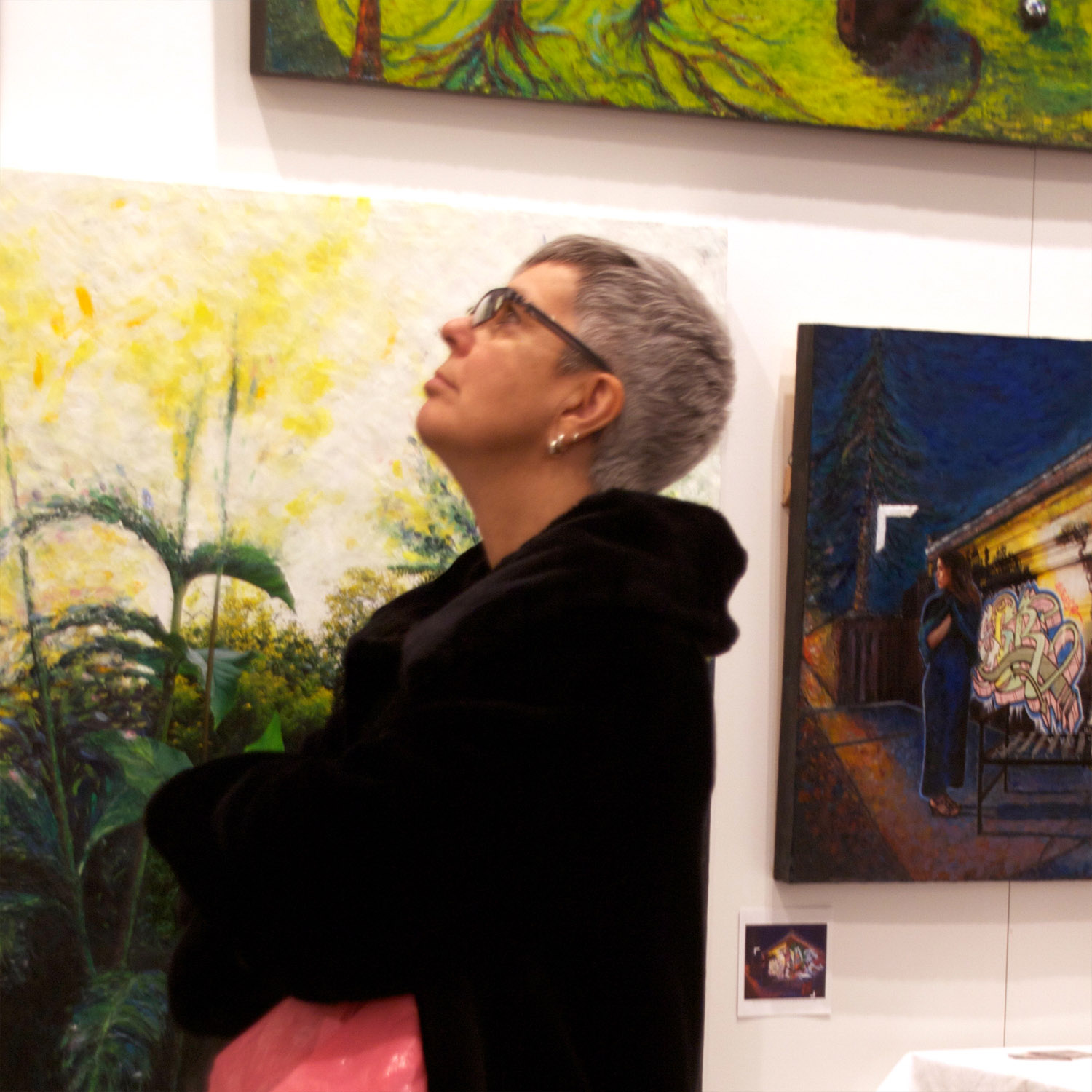




















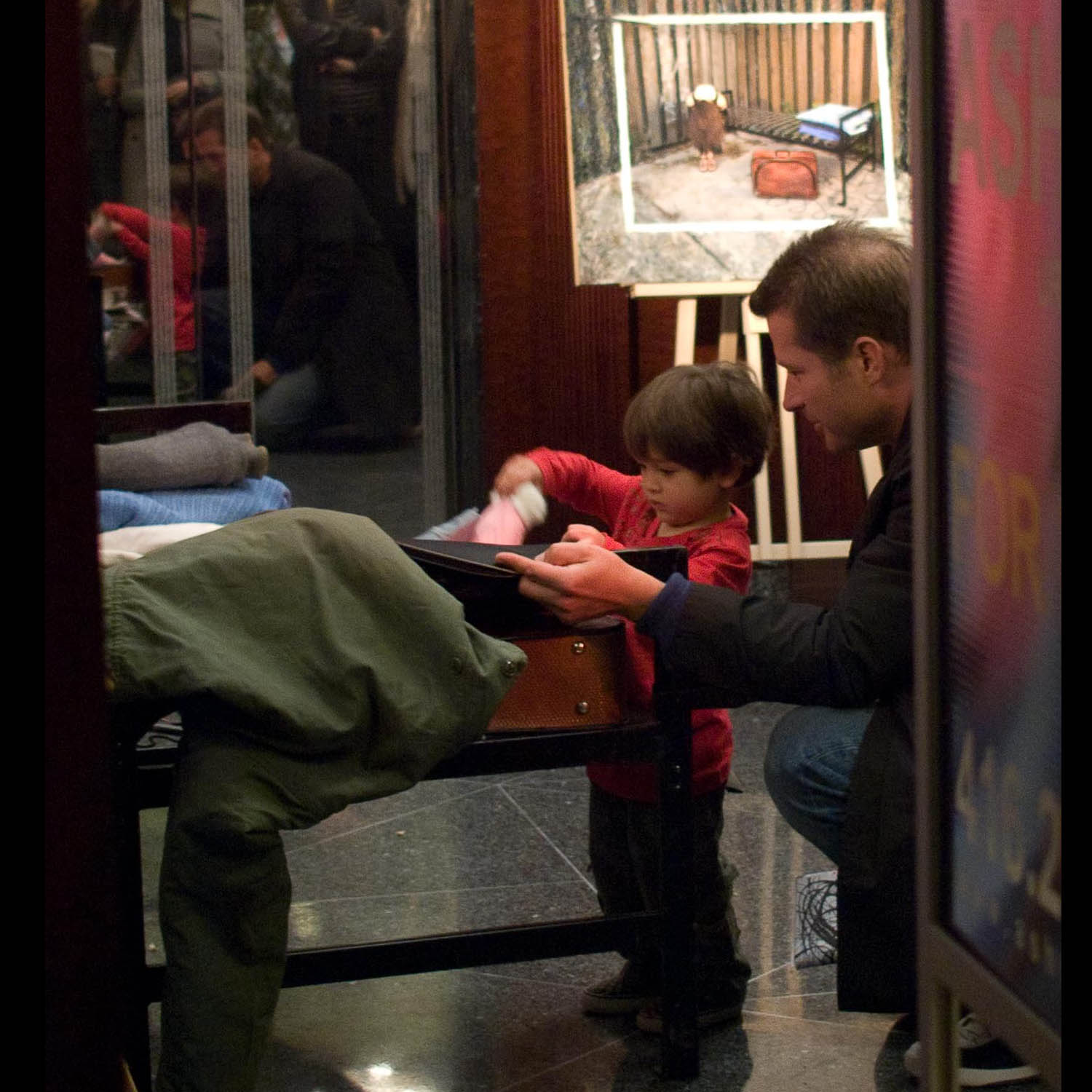














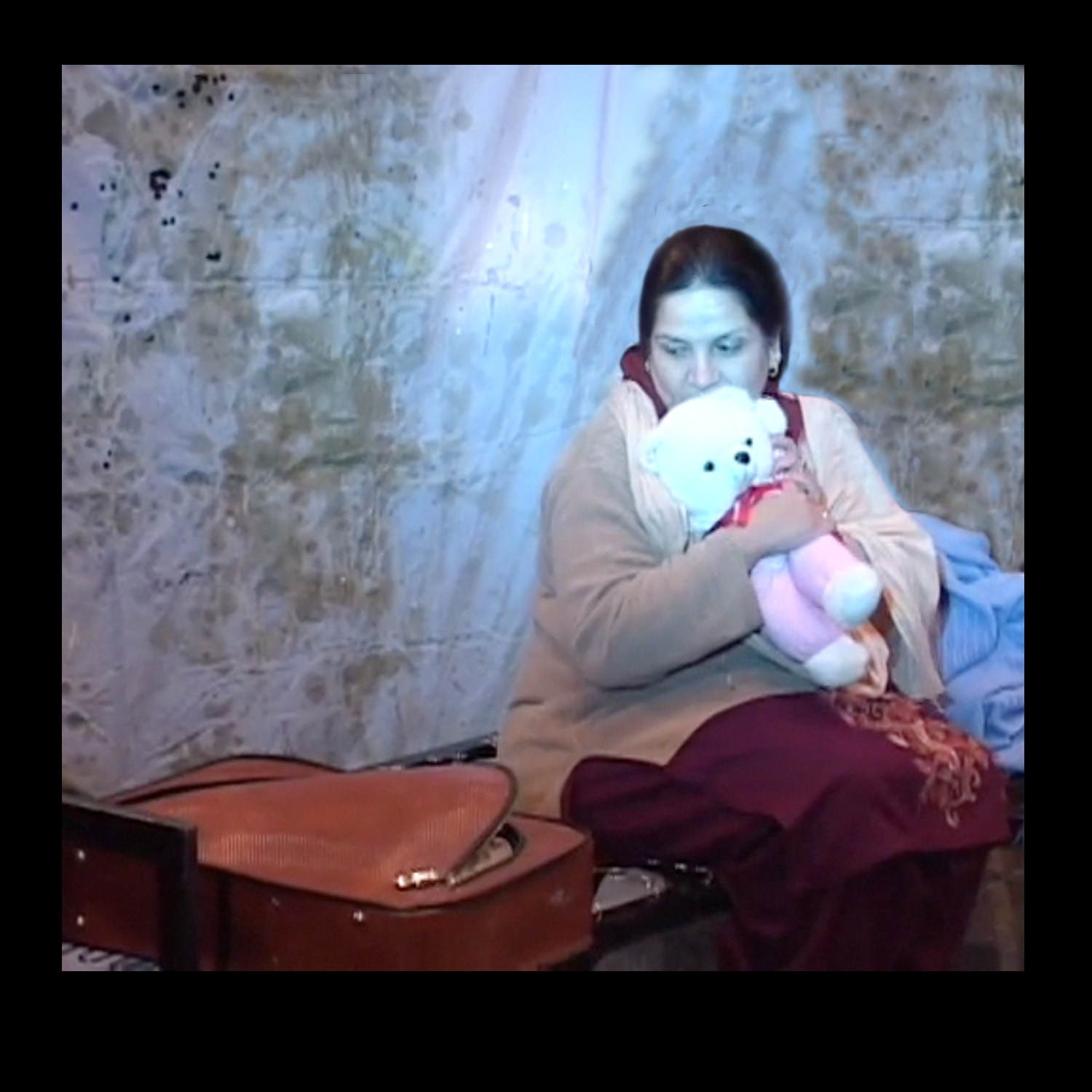




























“For me, the bed represents my own internal prison and the sense of alienation I have felt in the world around me.
The paintings are an effective manifestation of my own internal struggles.
It’s comforting to know others experience similar discomfort.
We are all alone together.”
LyAnne - visitor/participant in 15 Minutes of Fame installation with Parallel Lines exhibition - Museum of Northern History; Counsellor with Canadian Mental Health Association